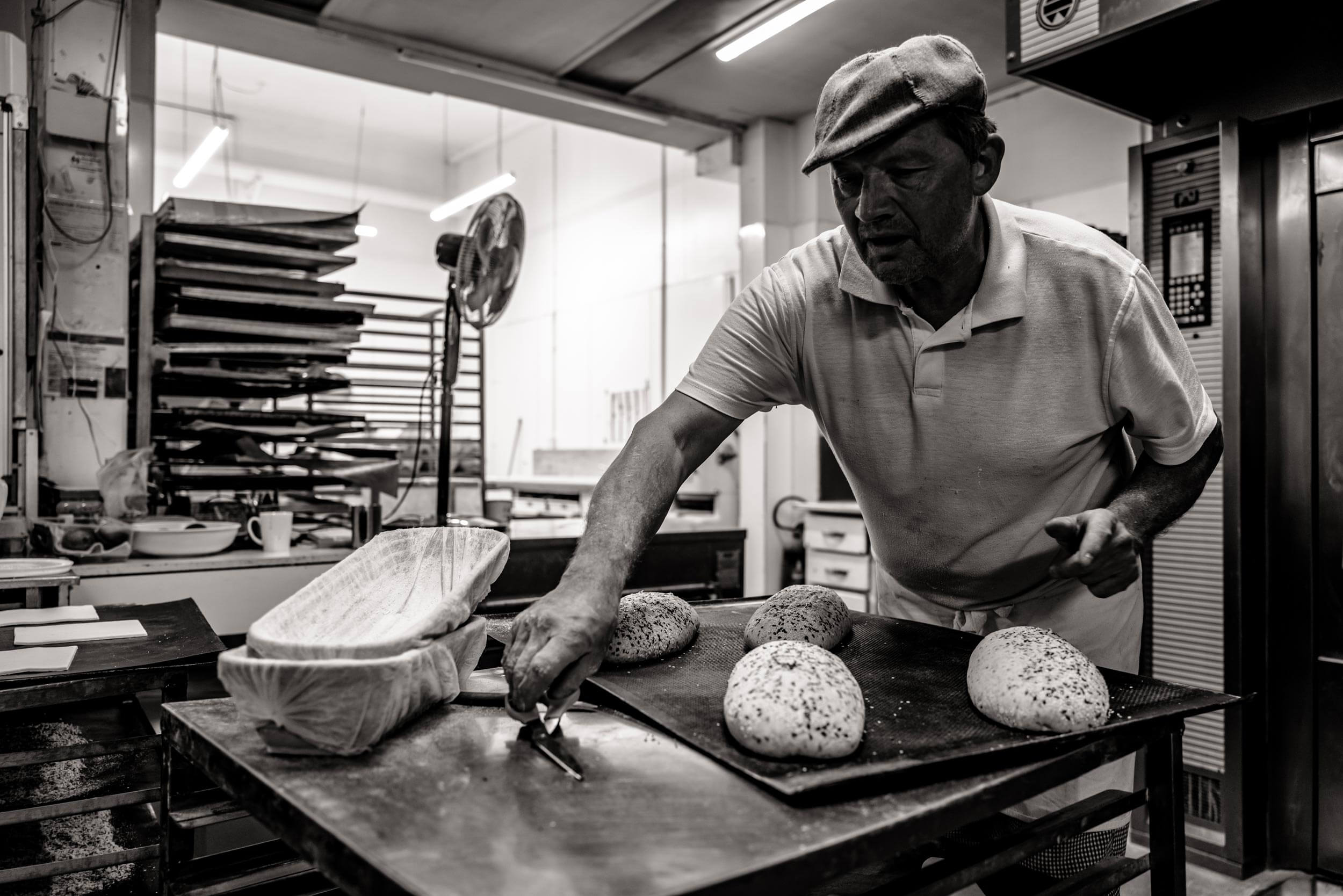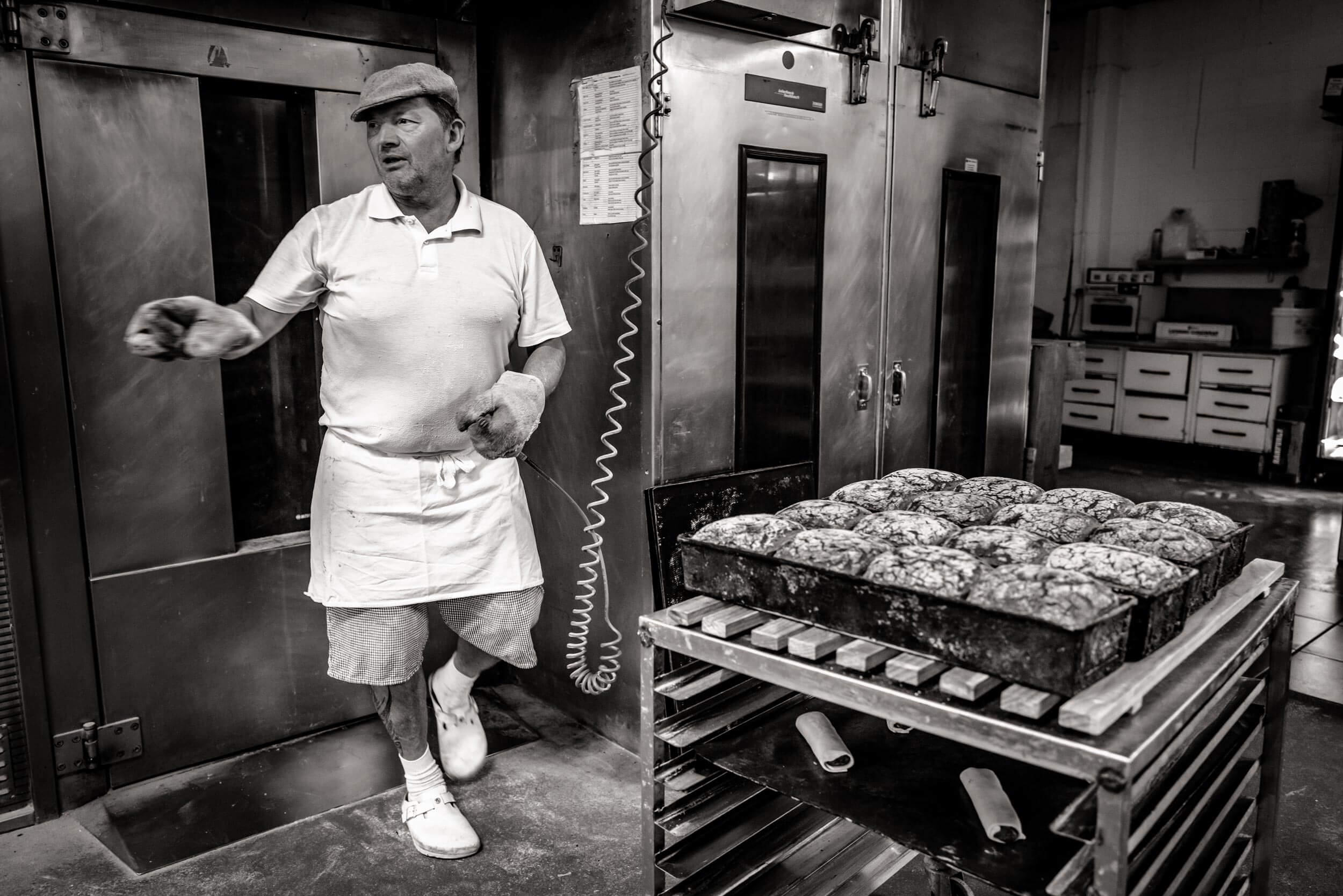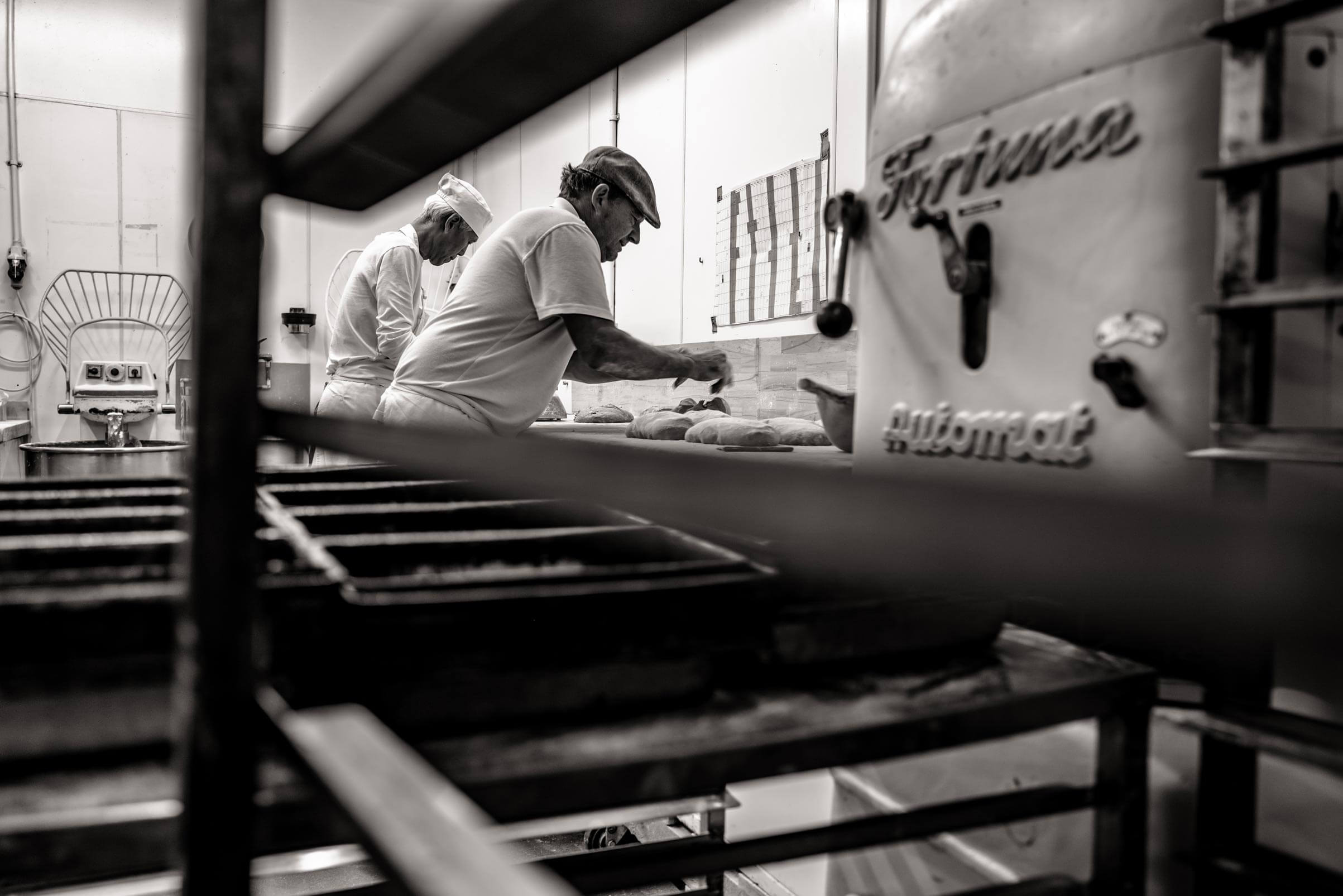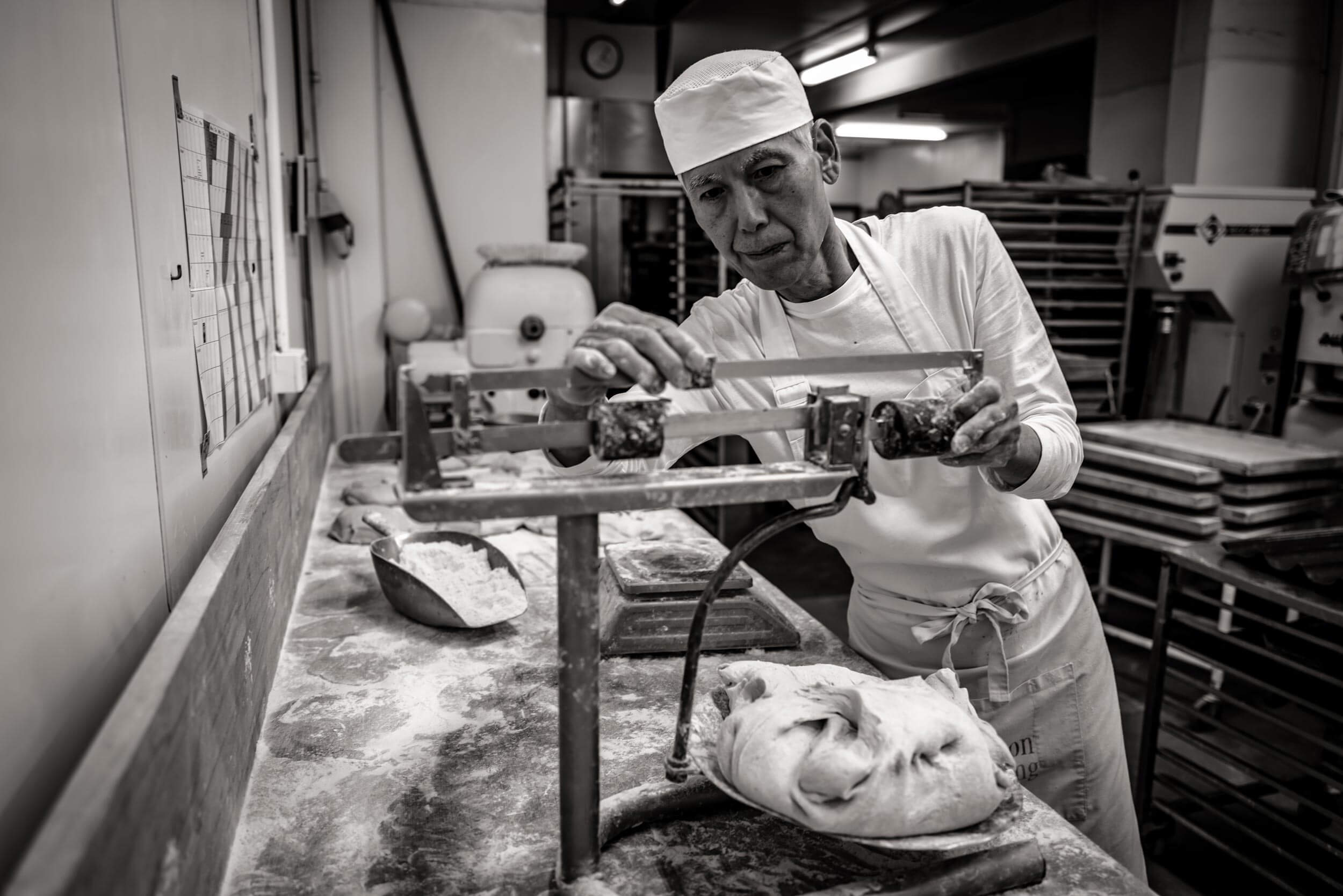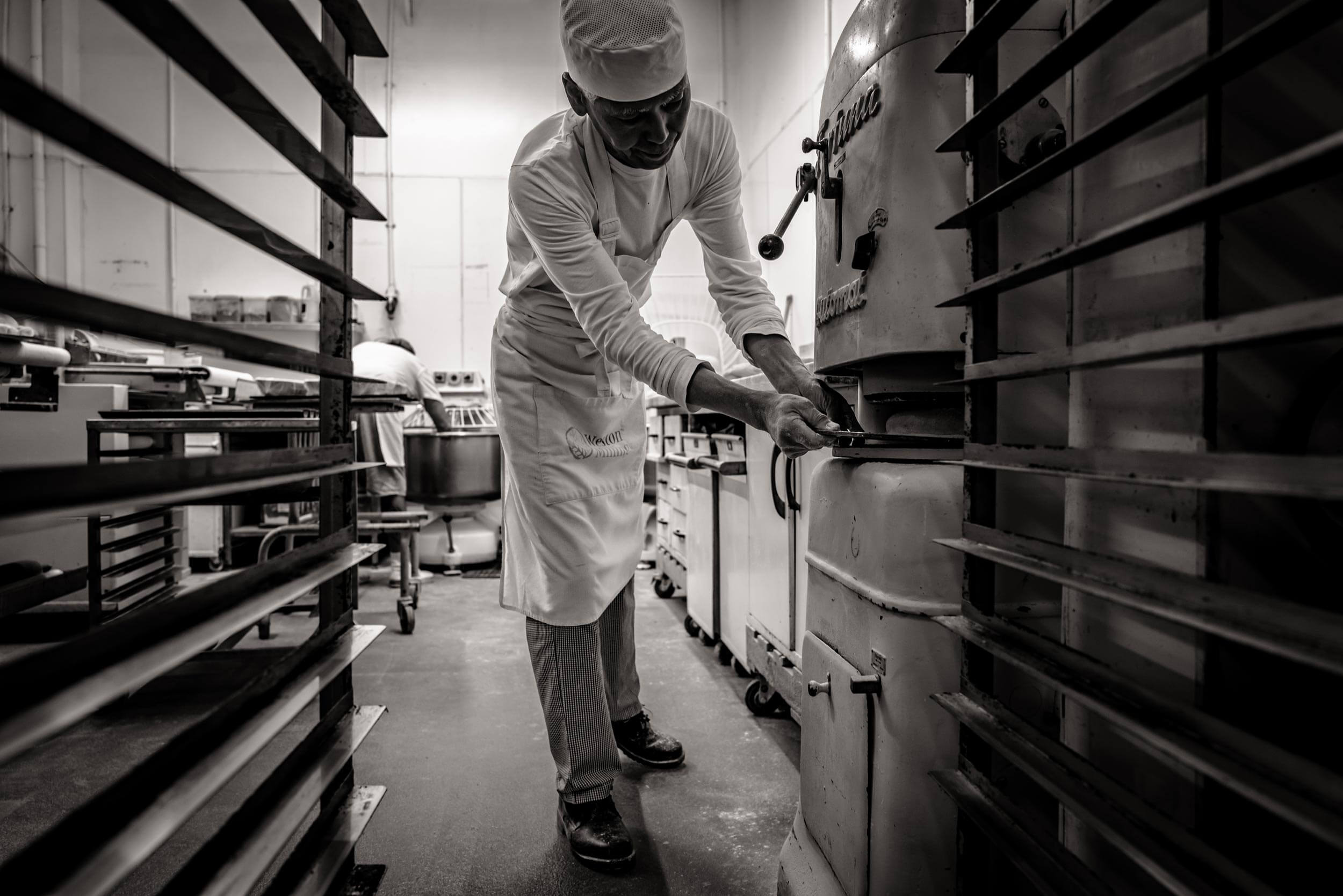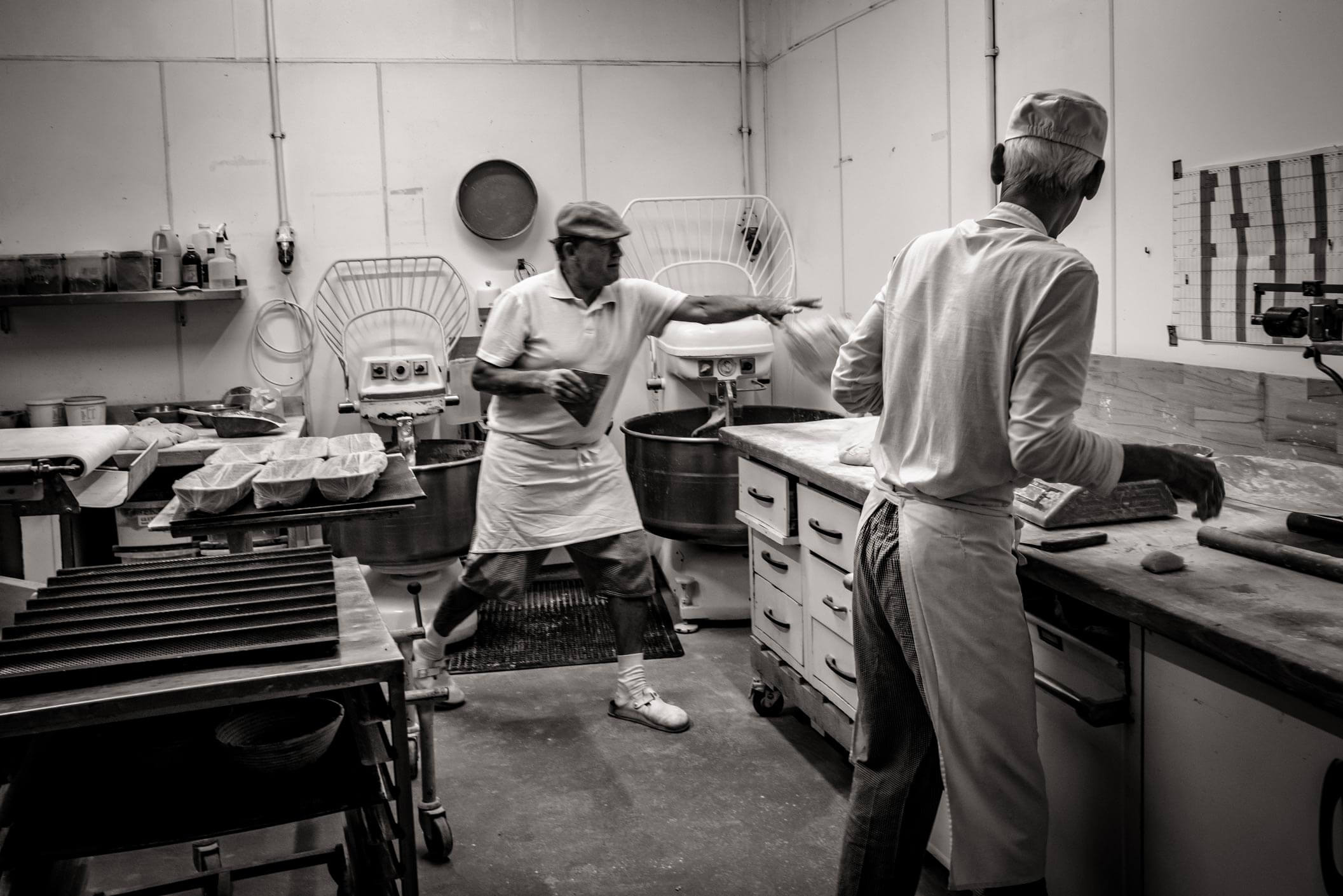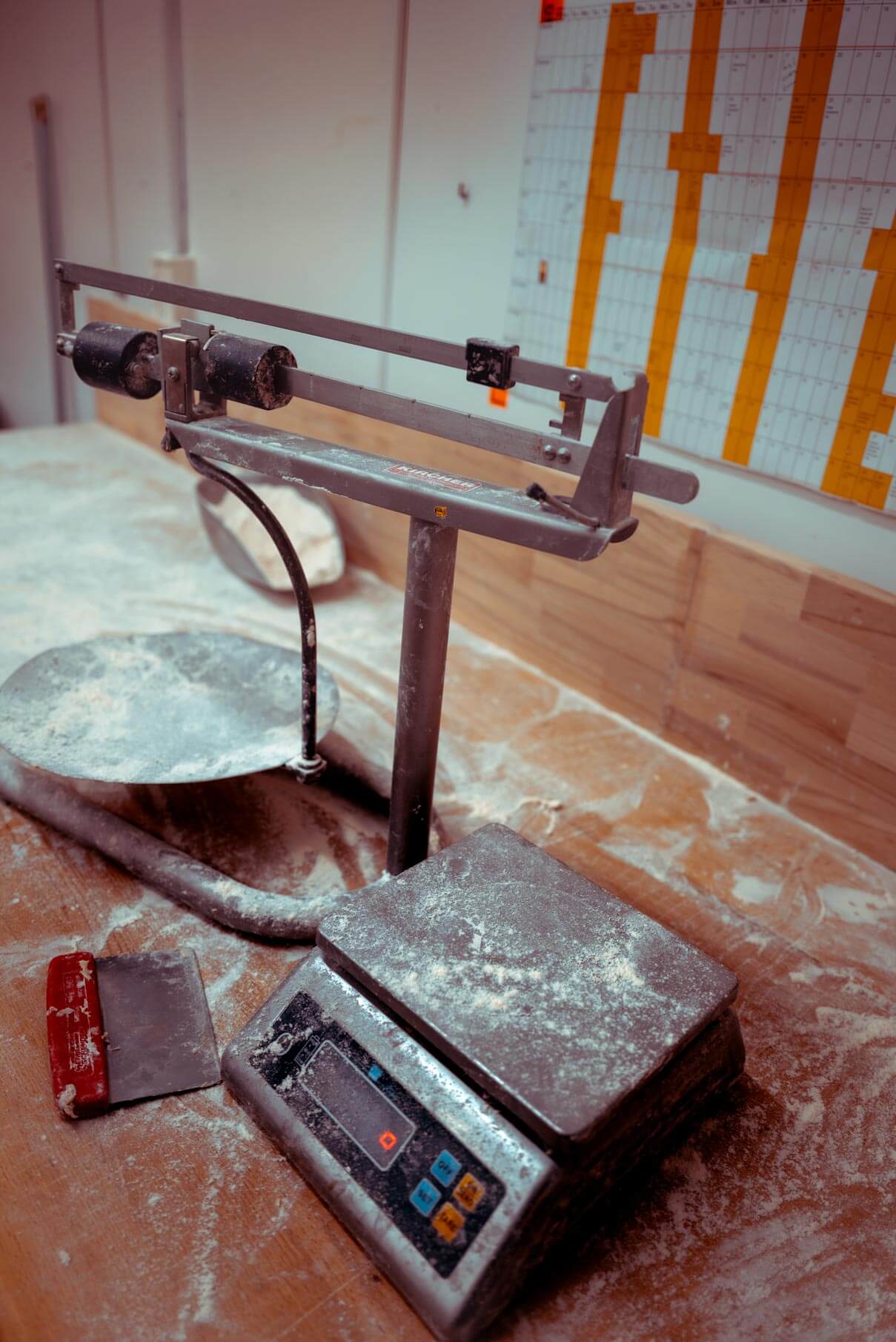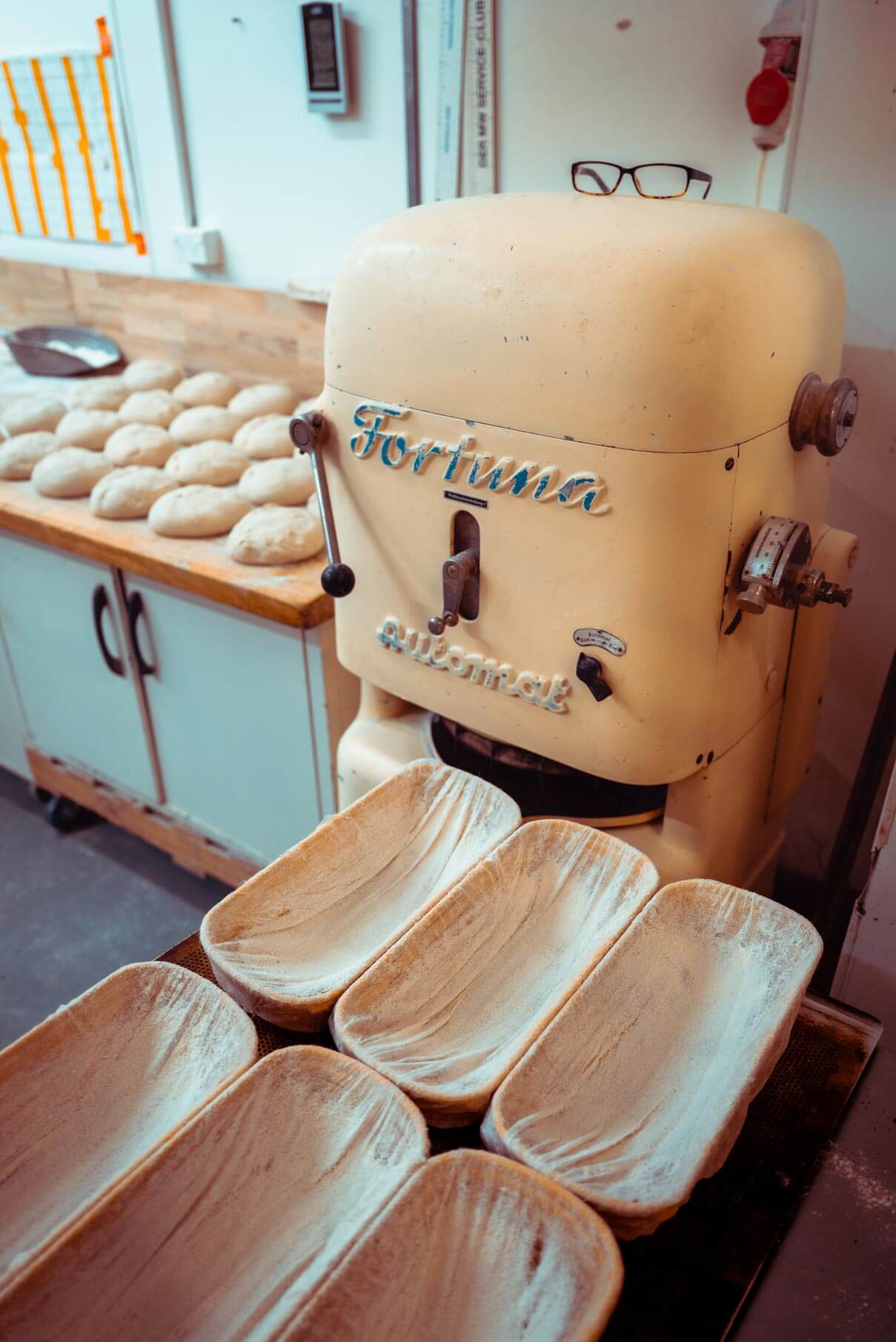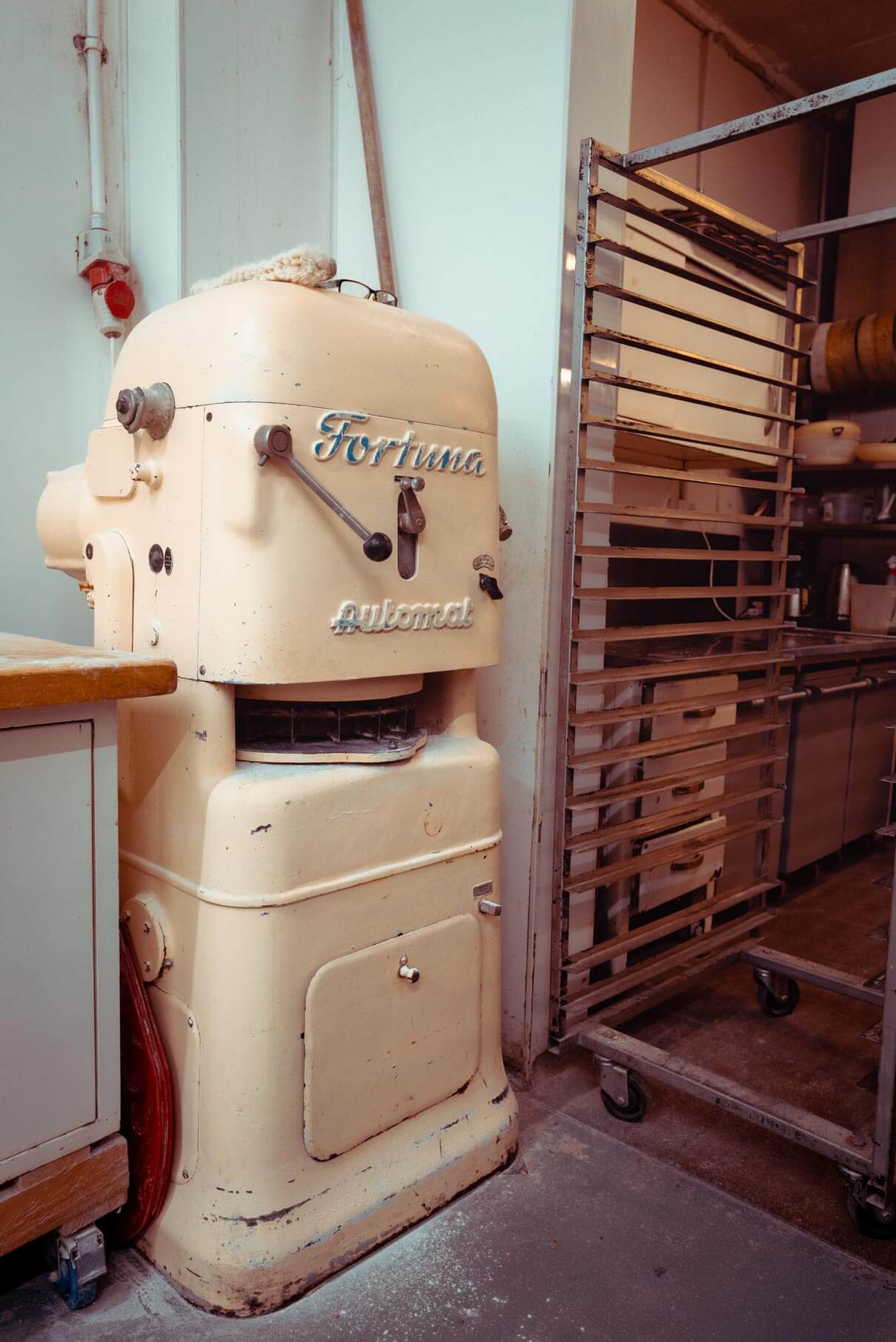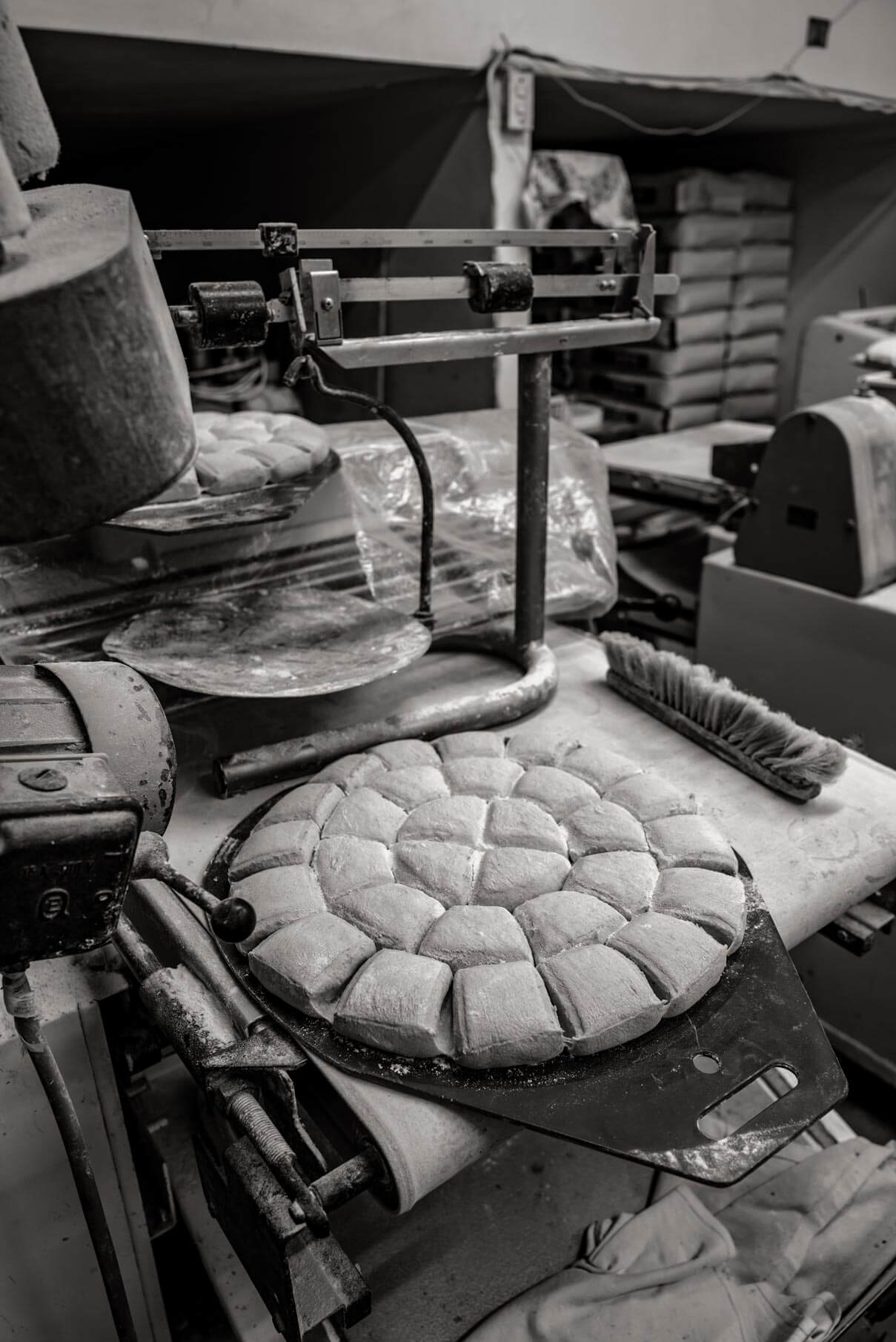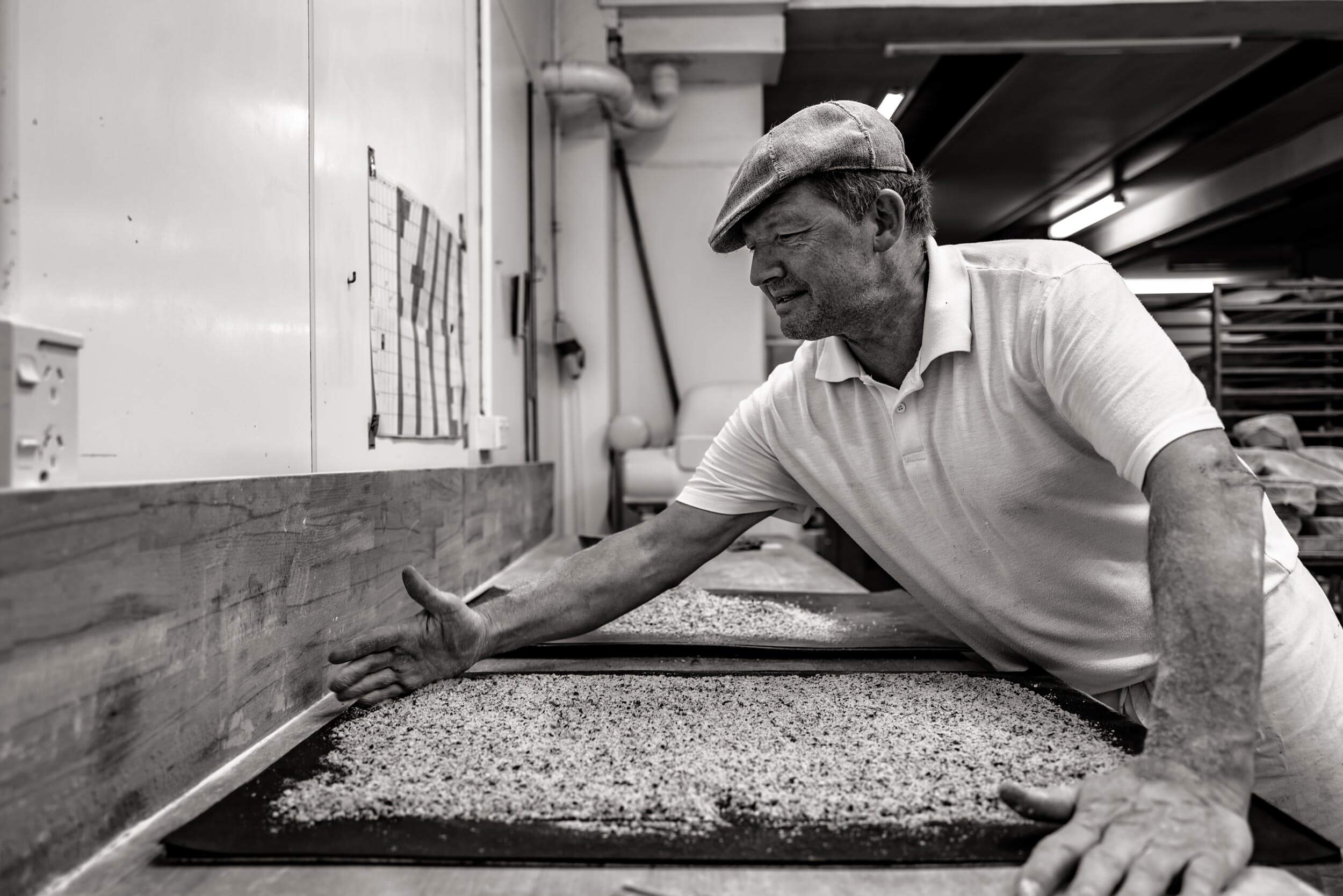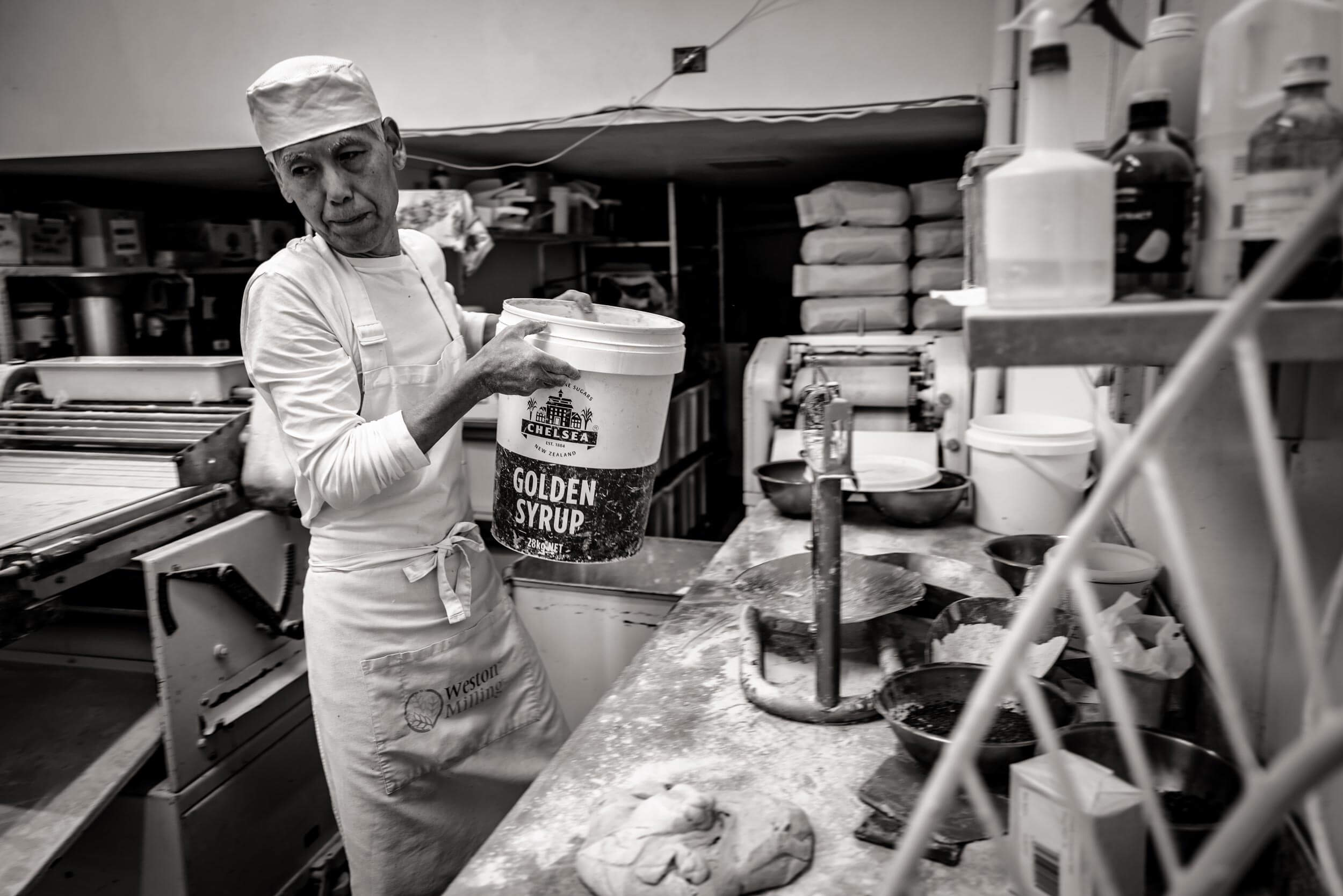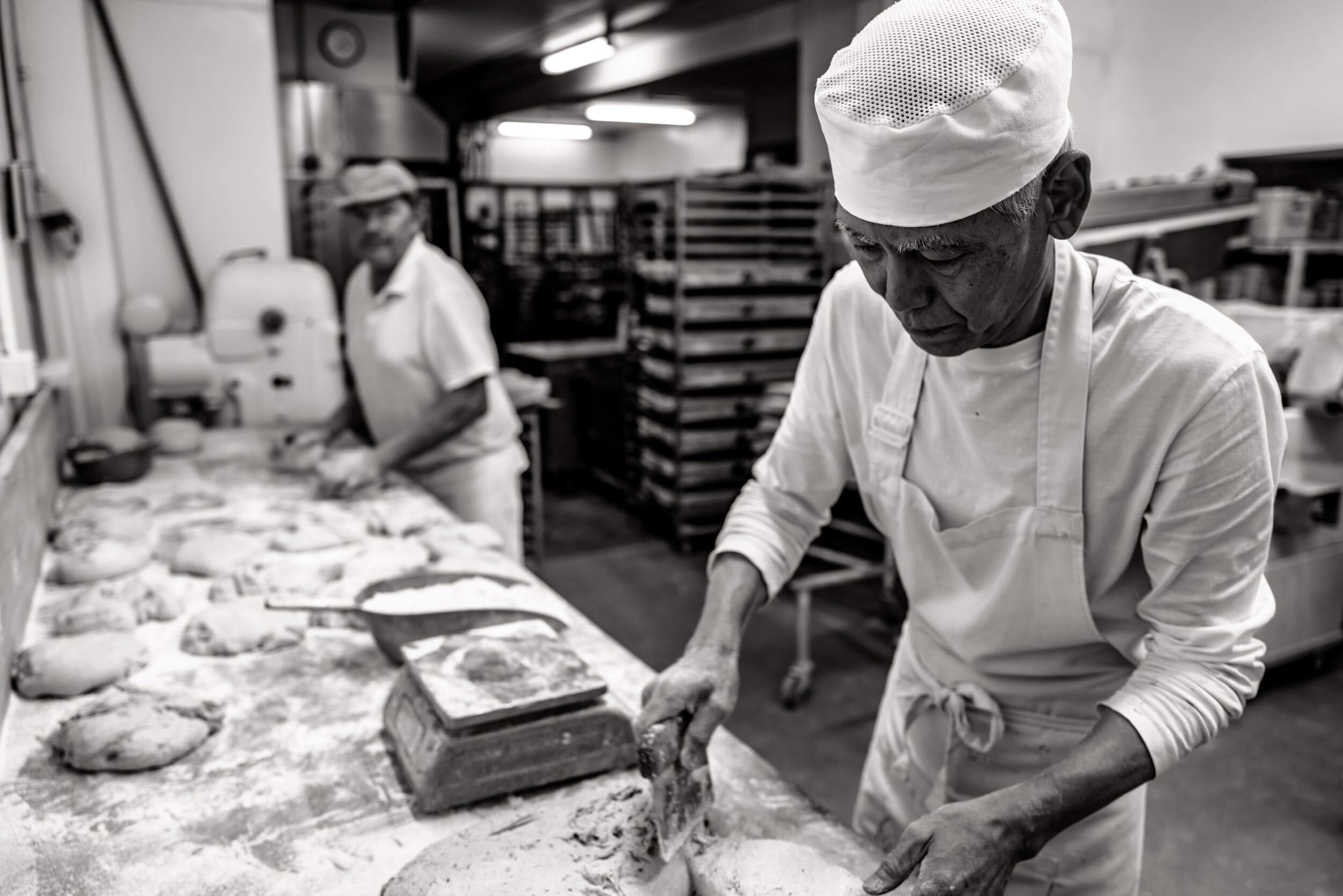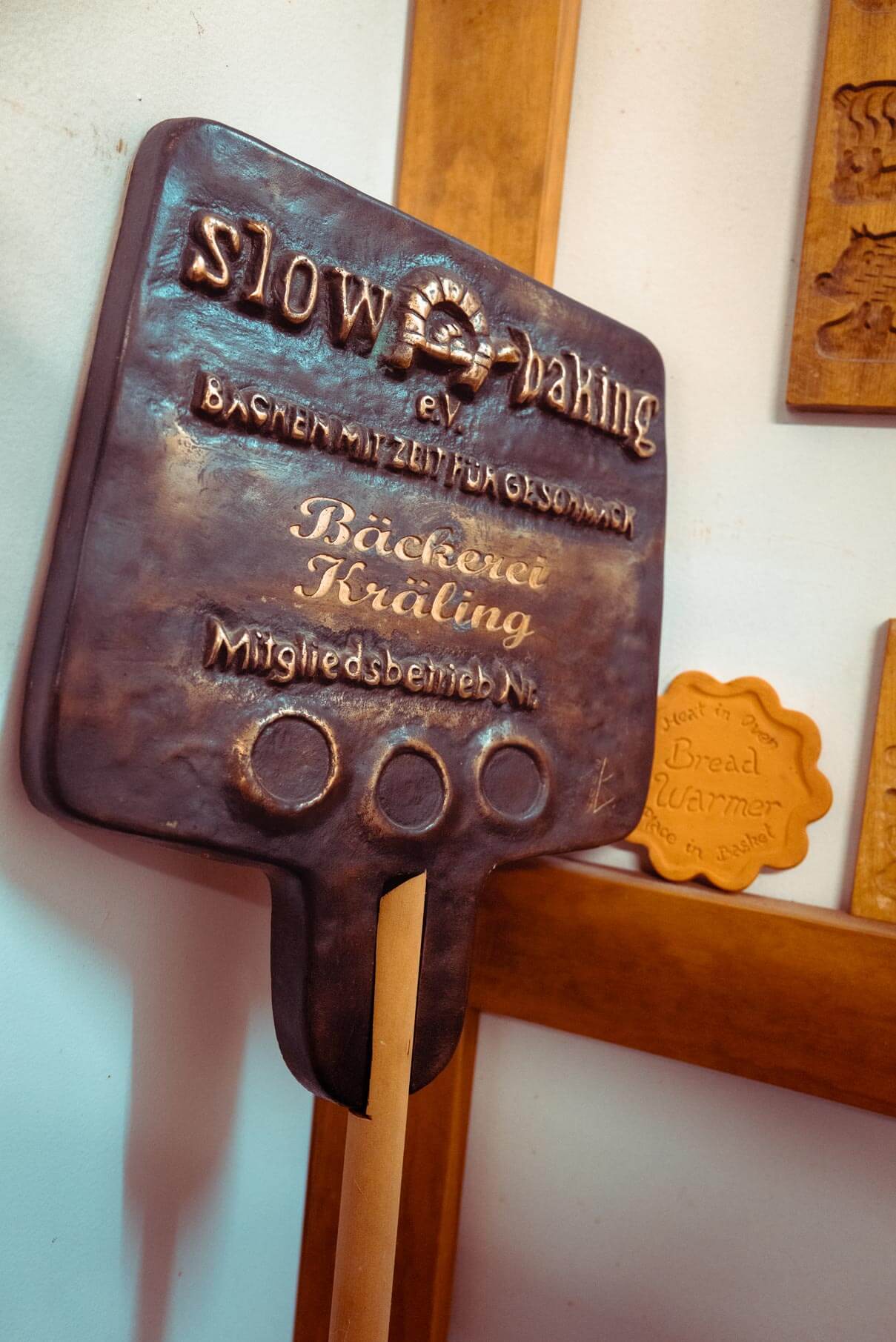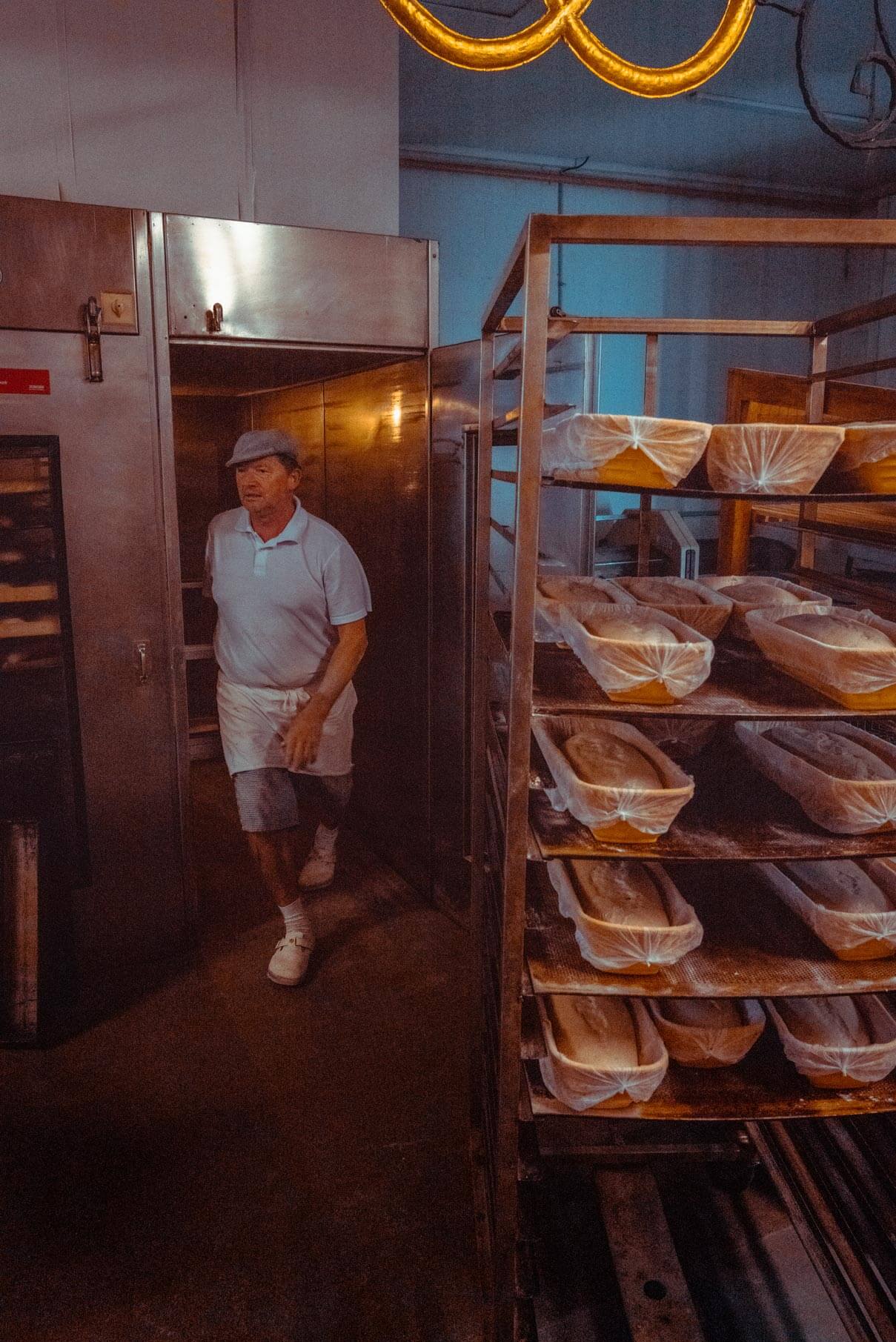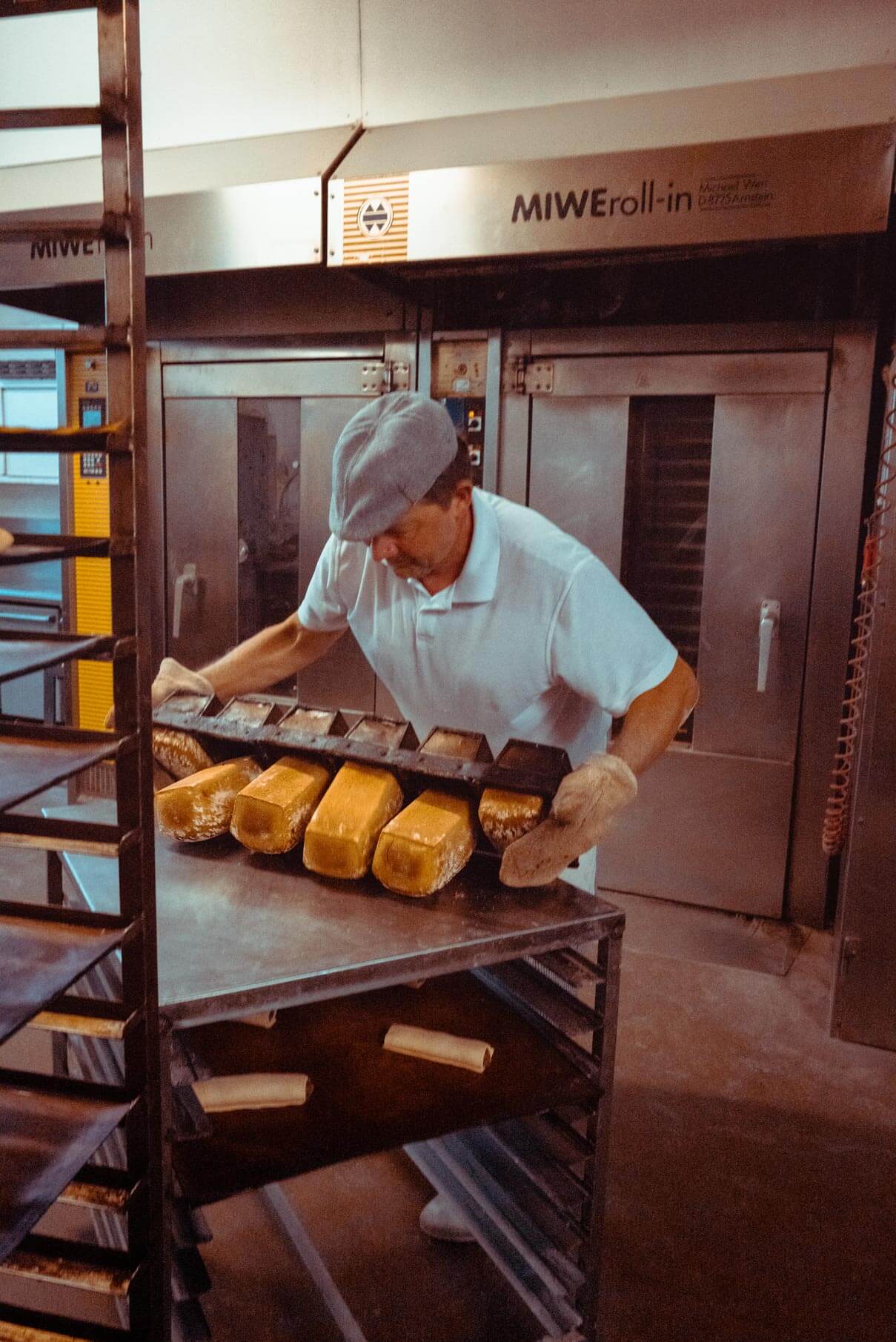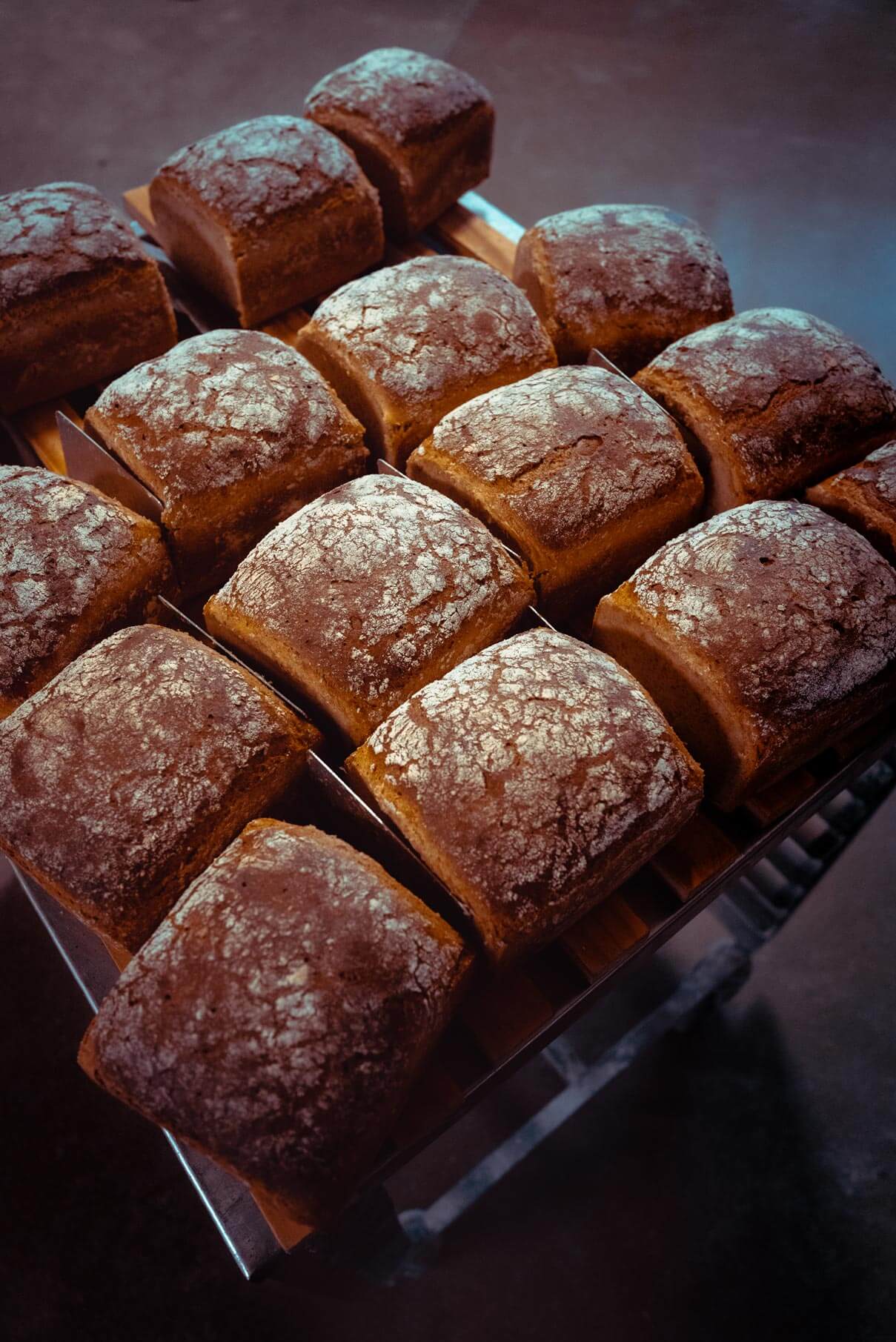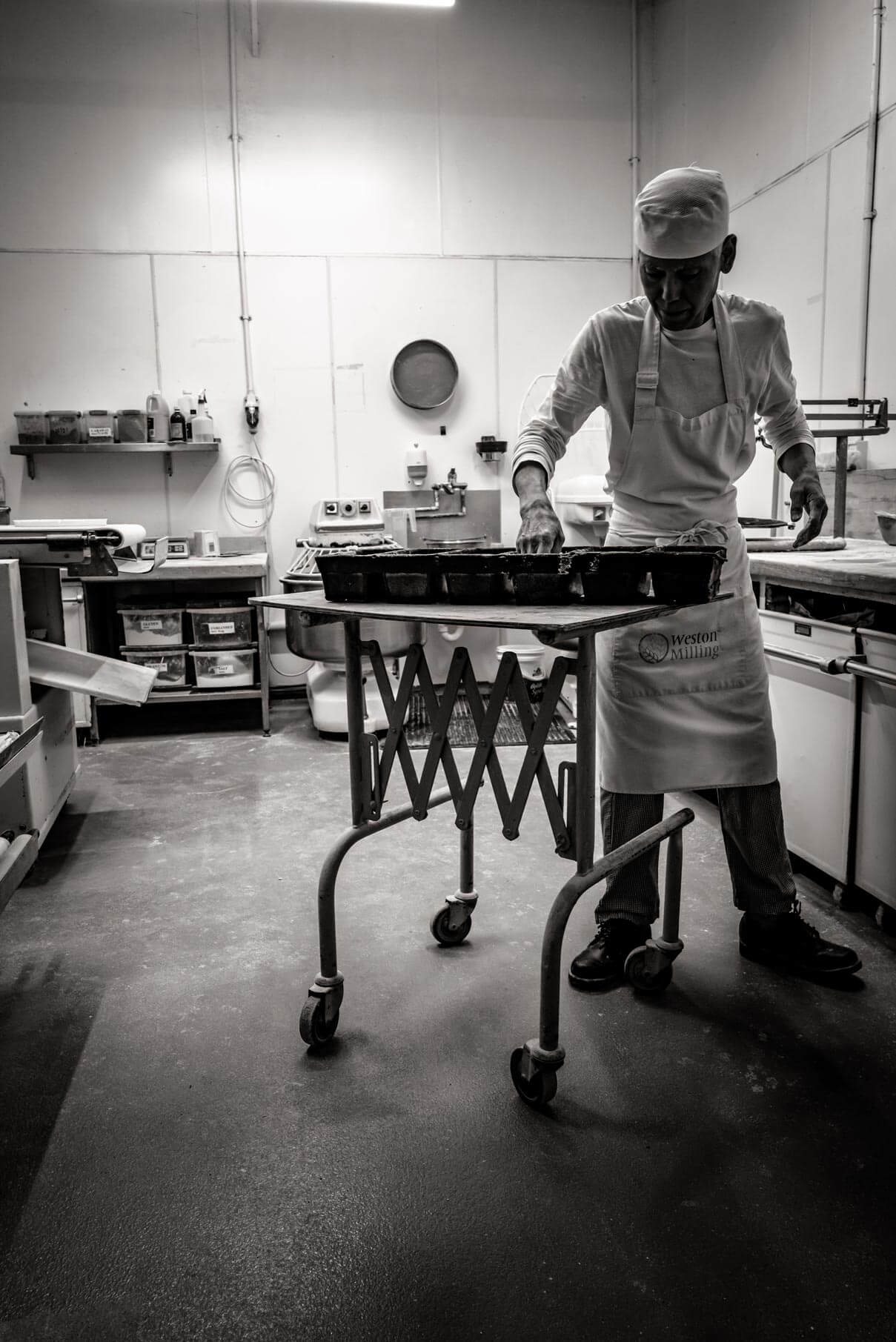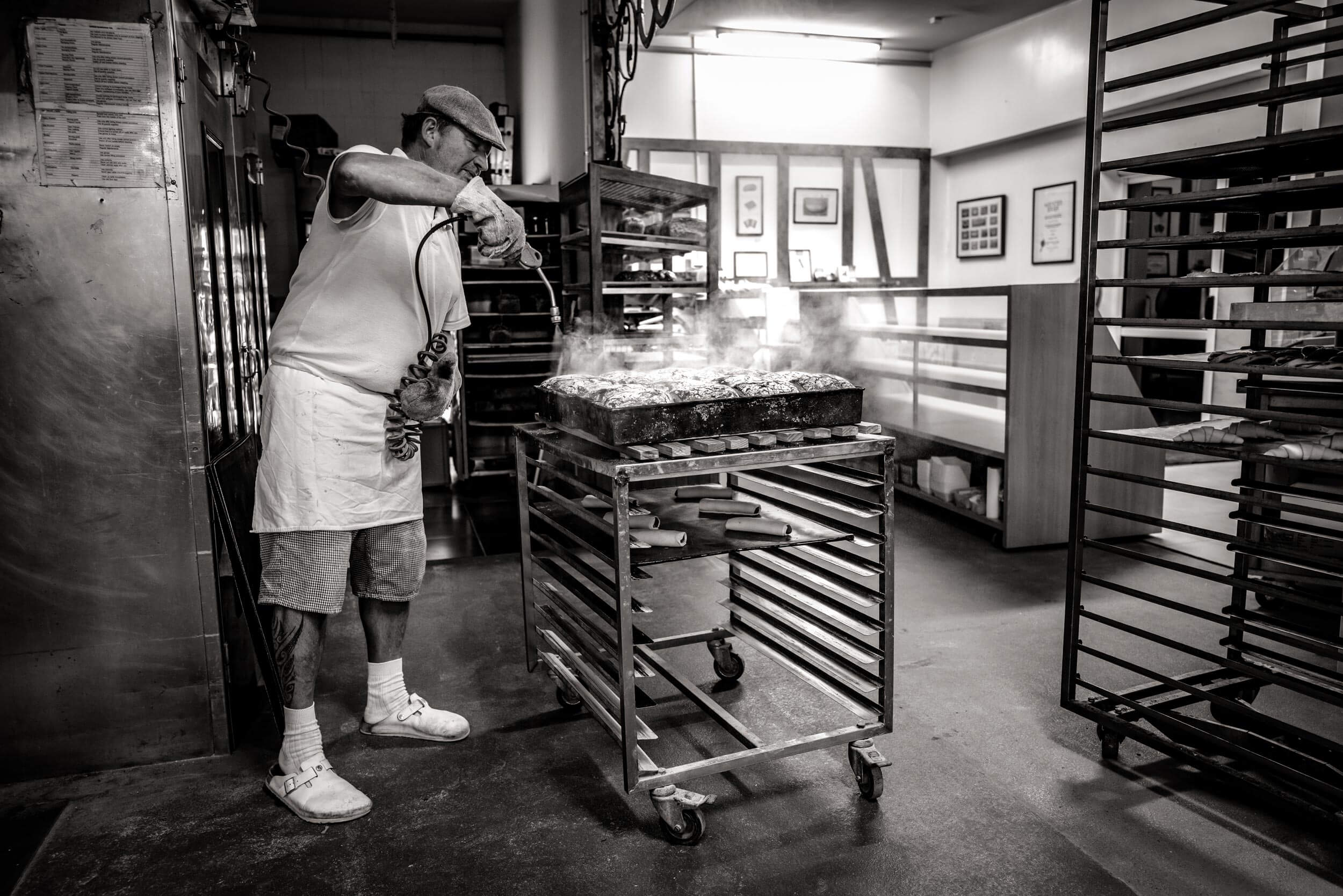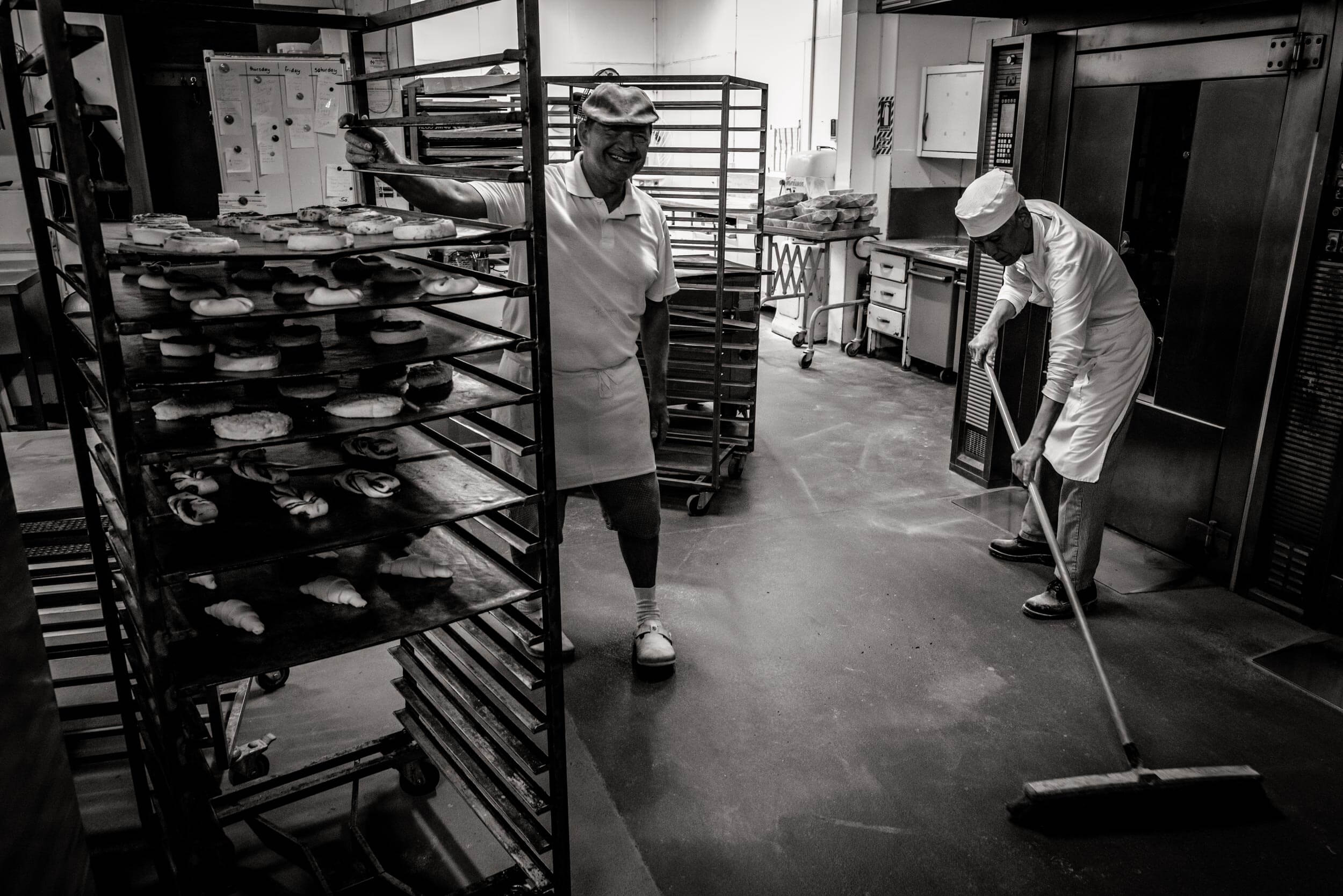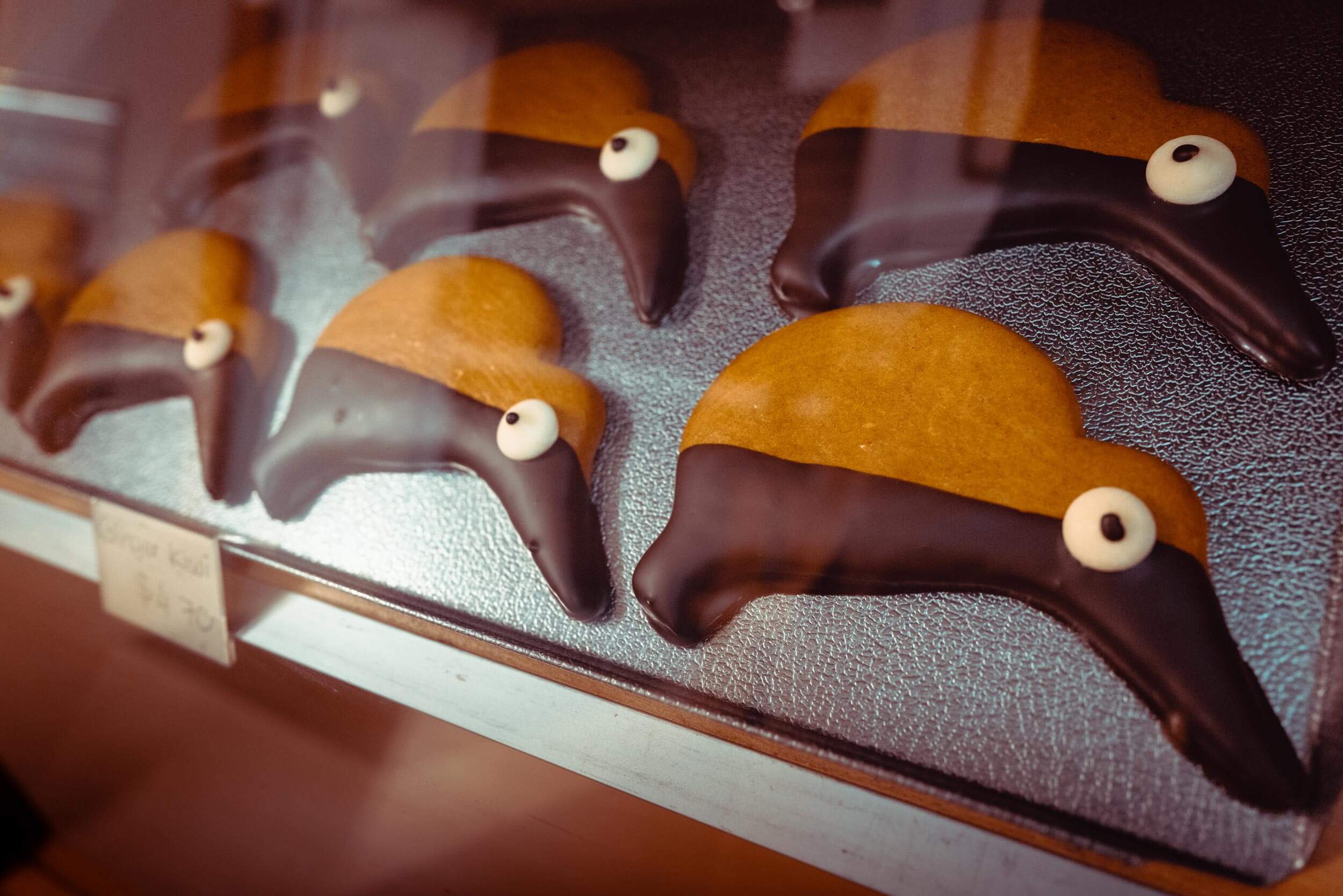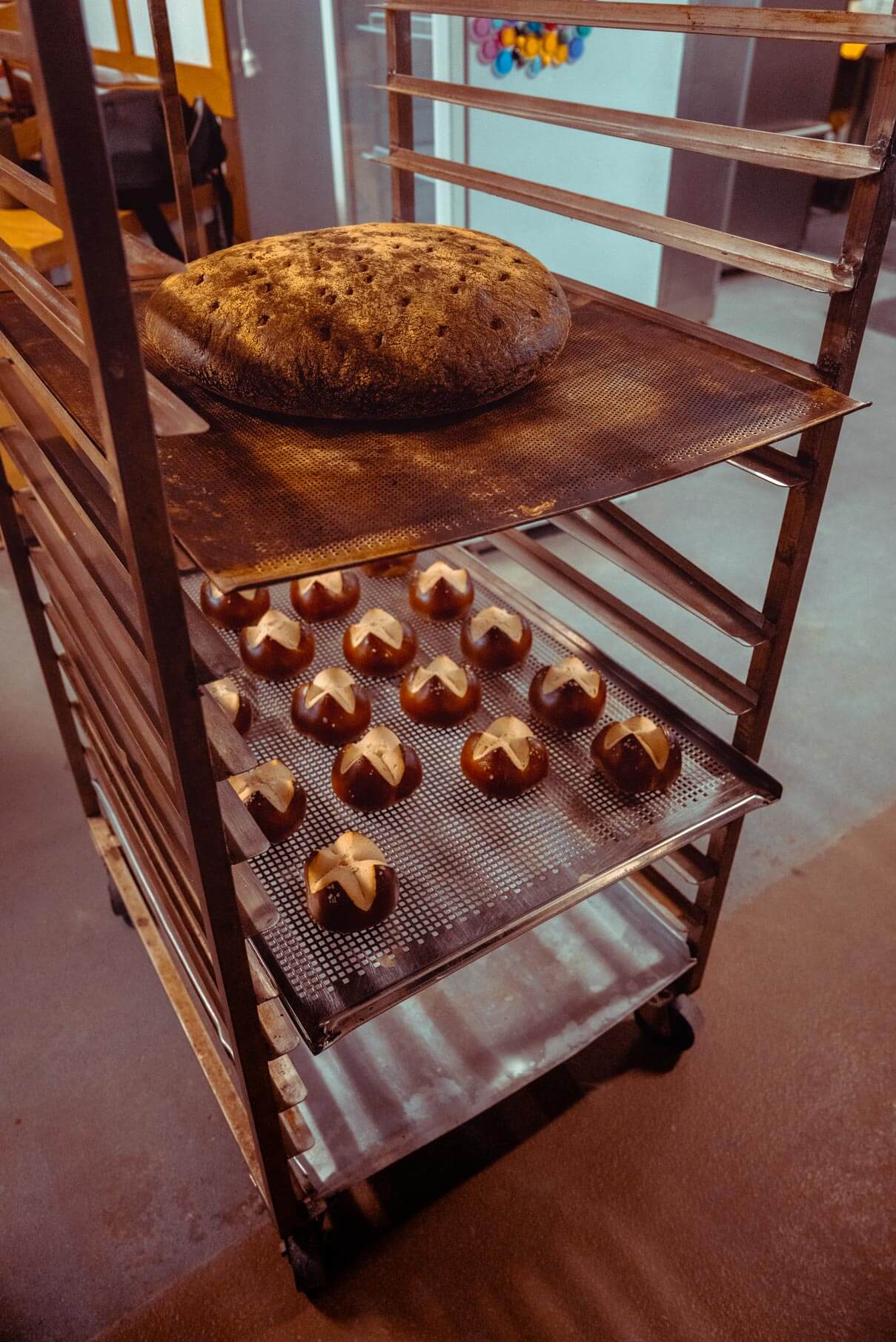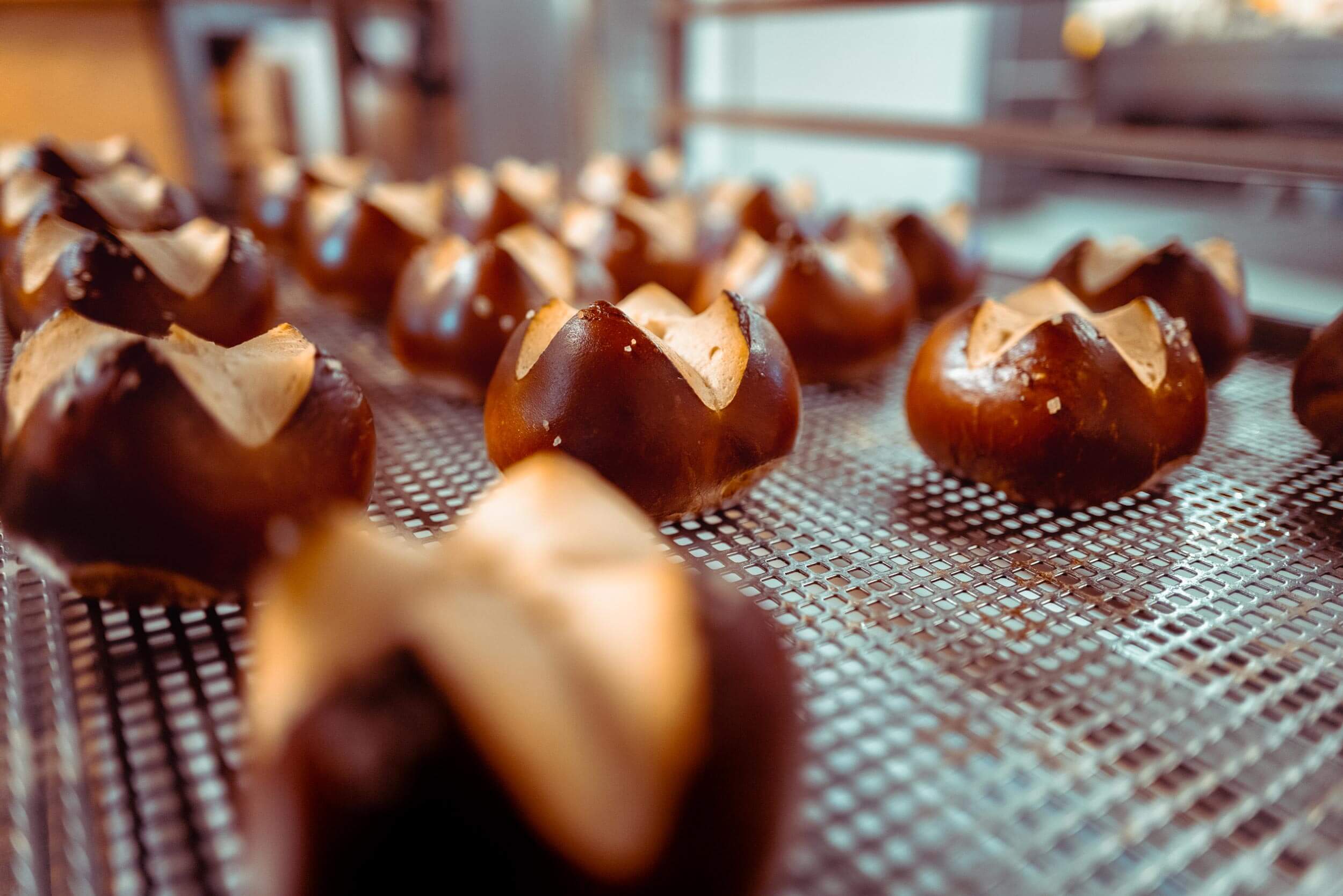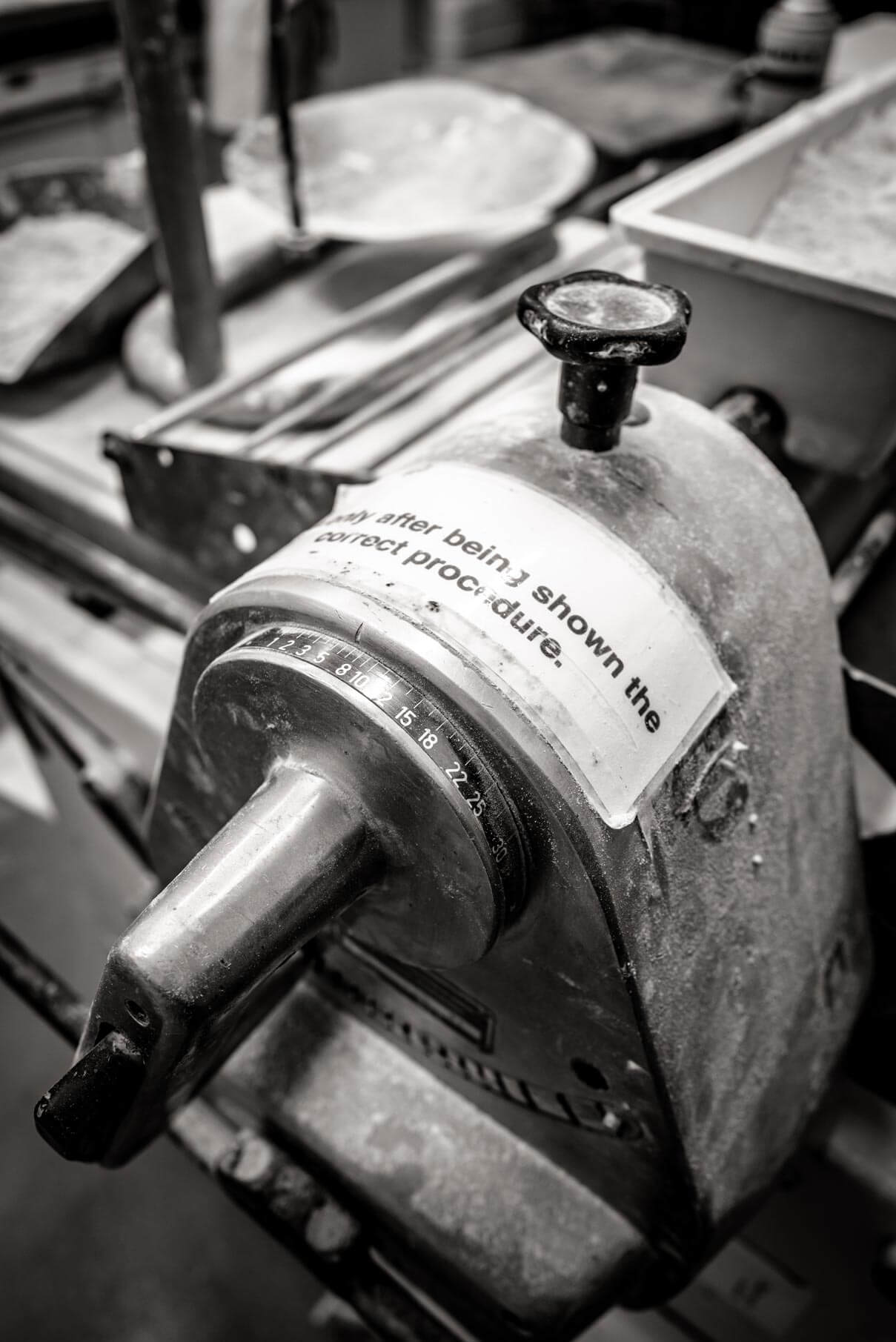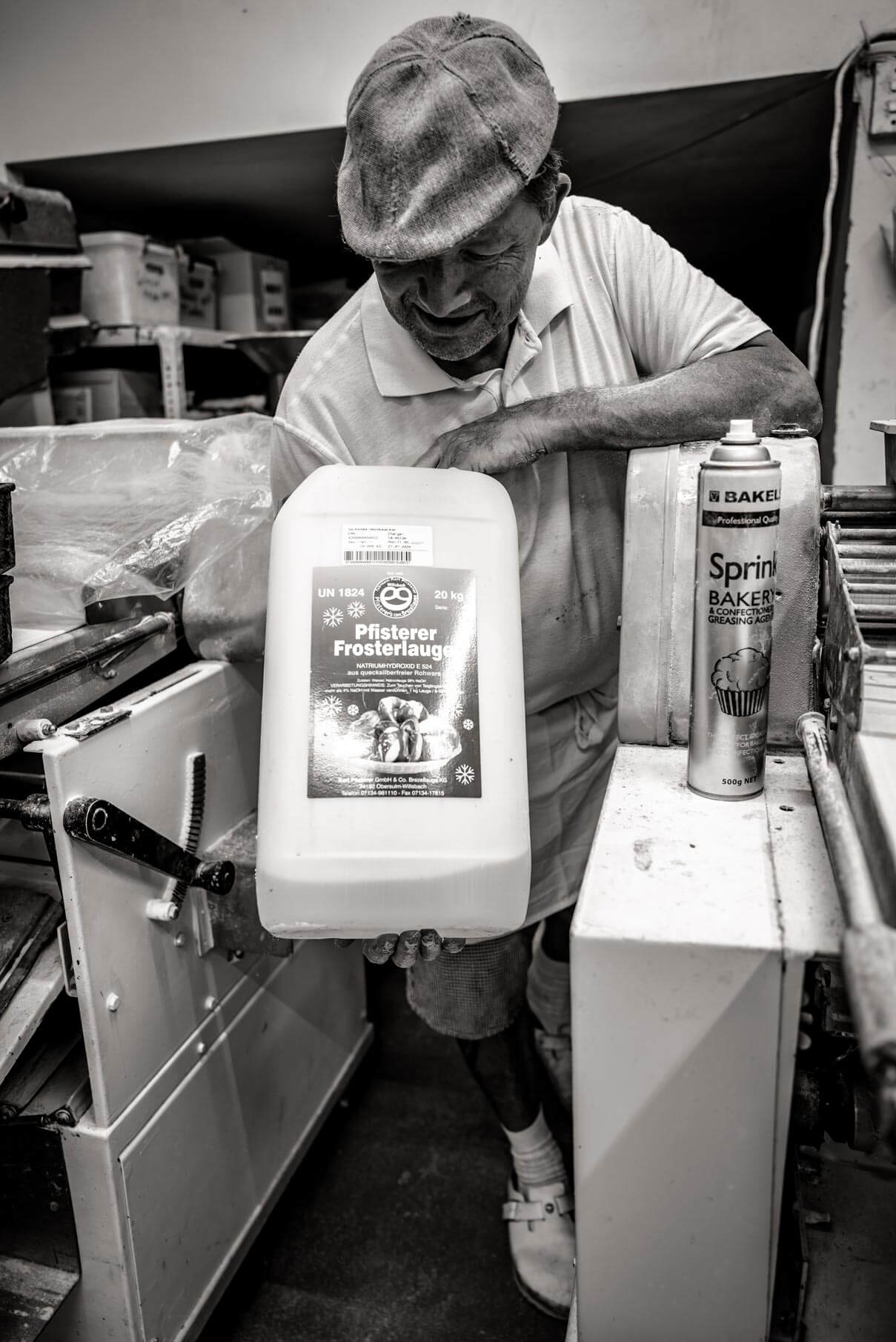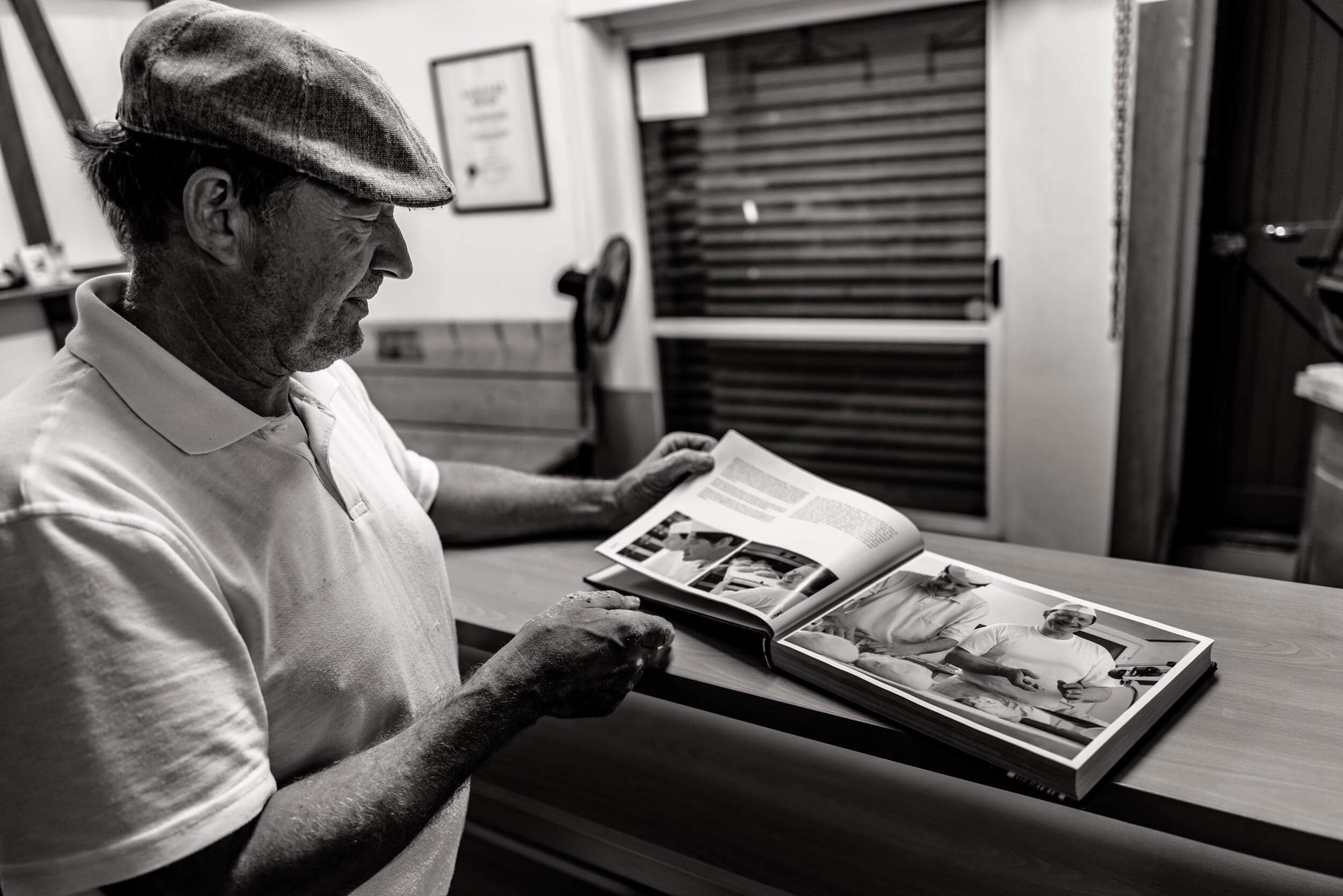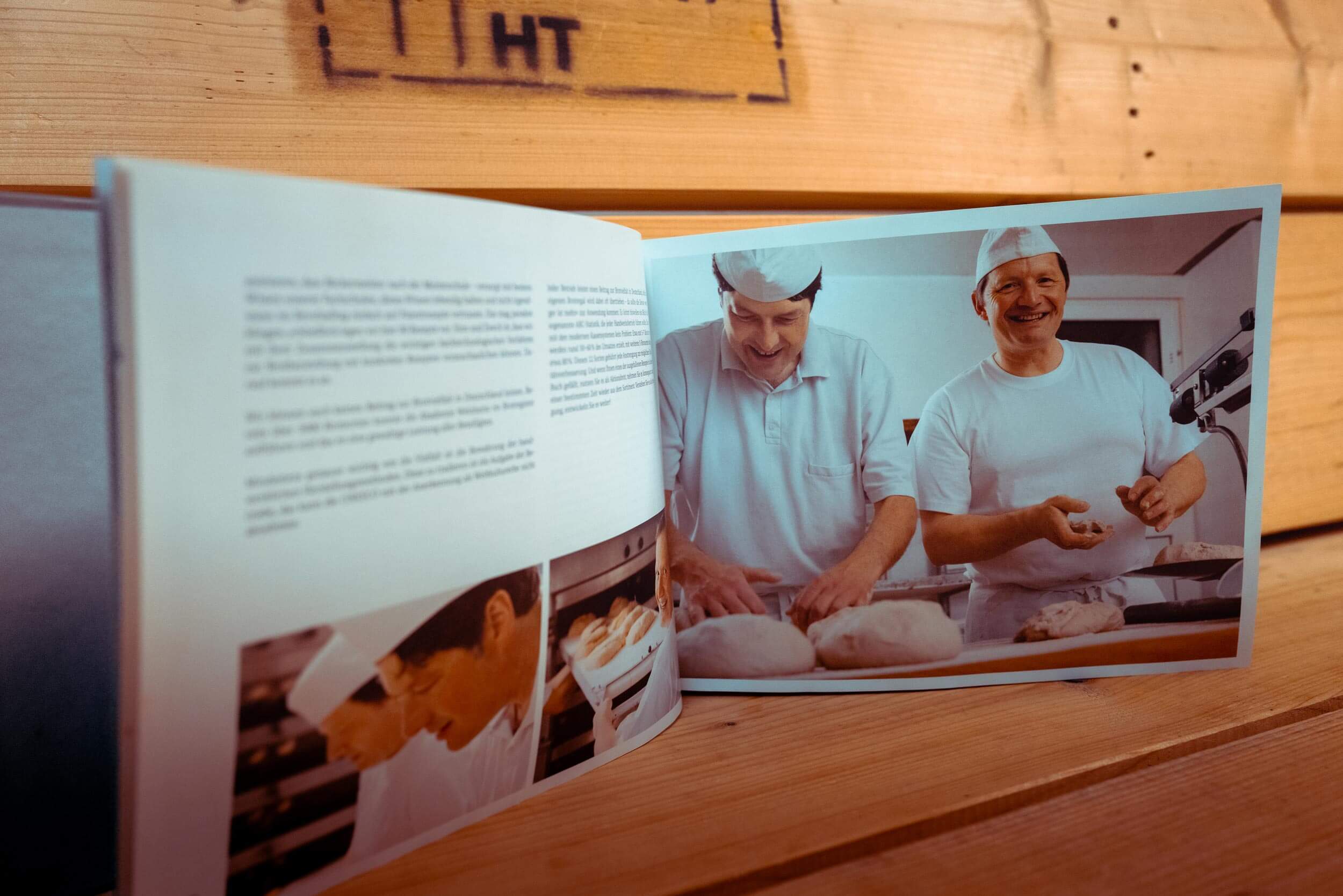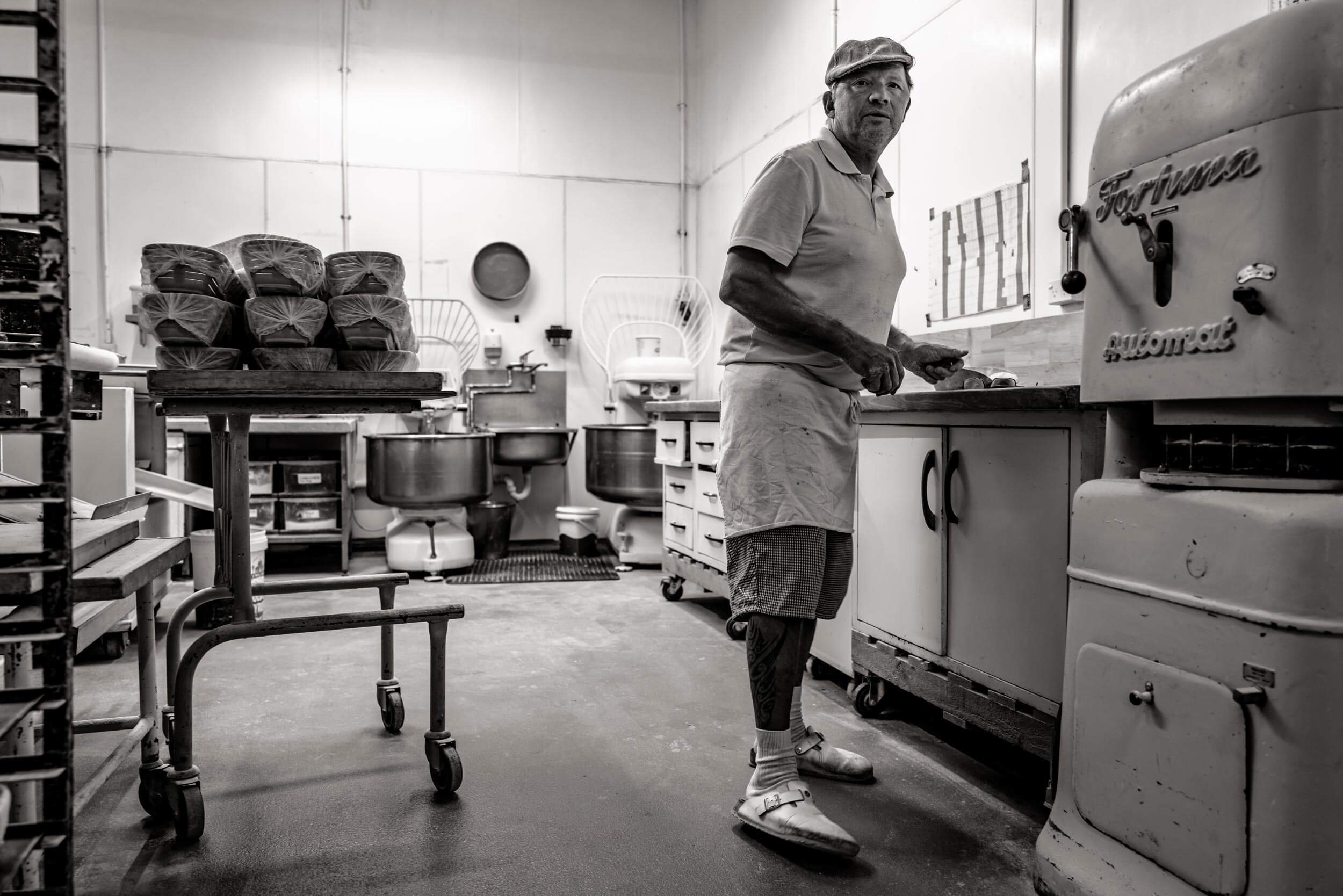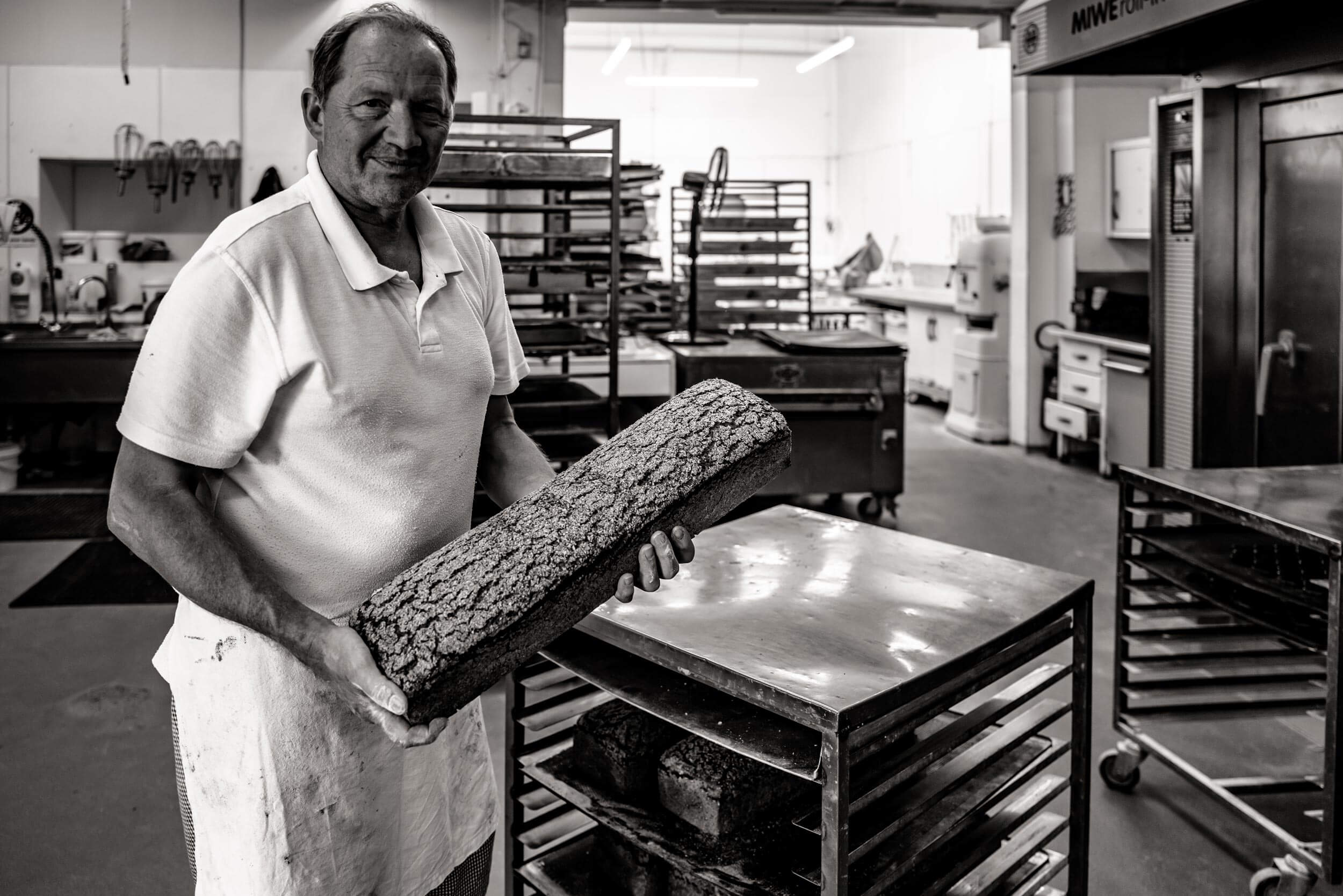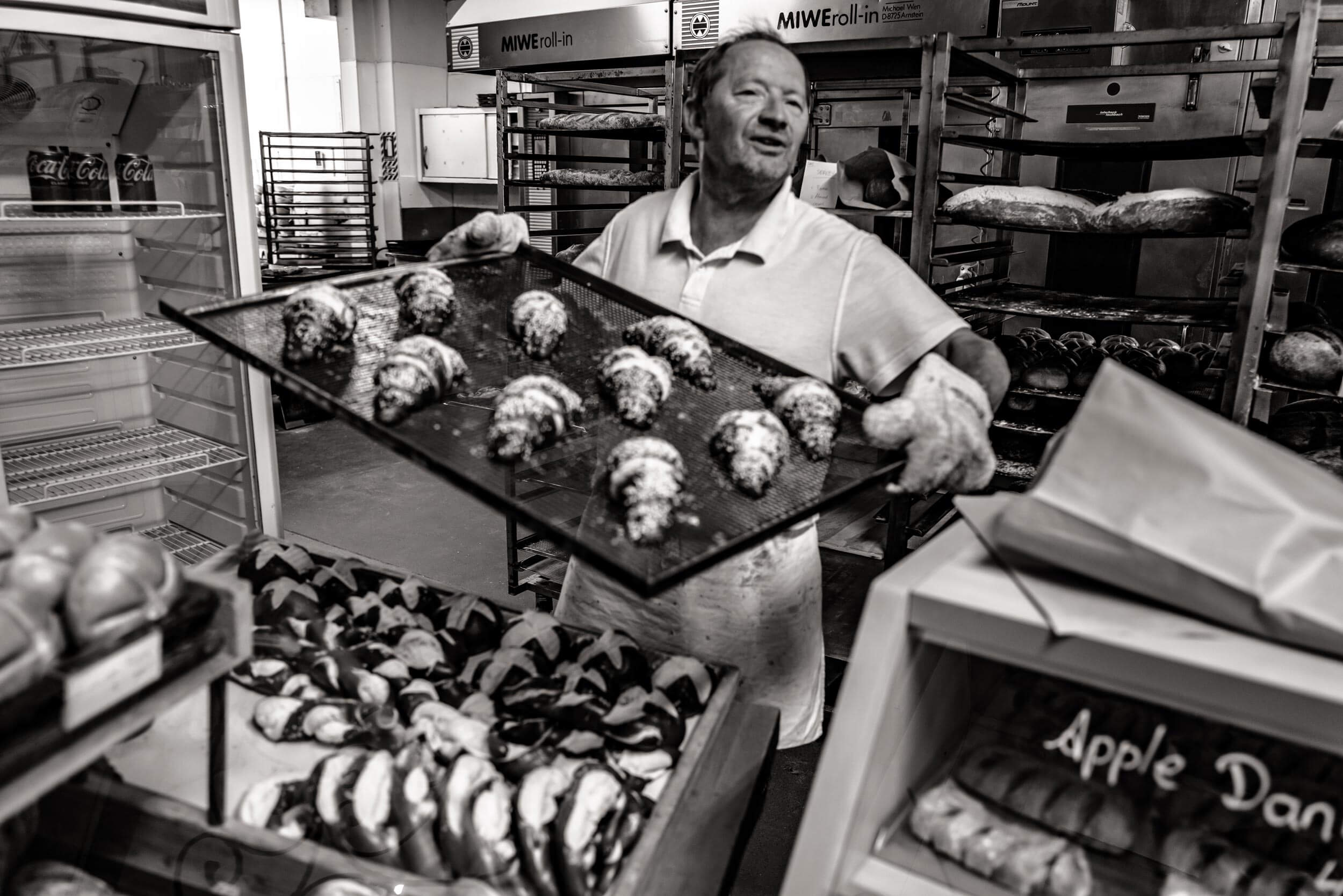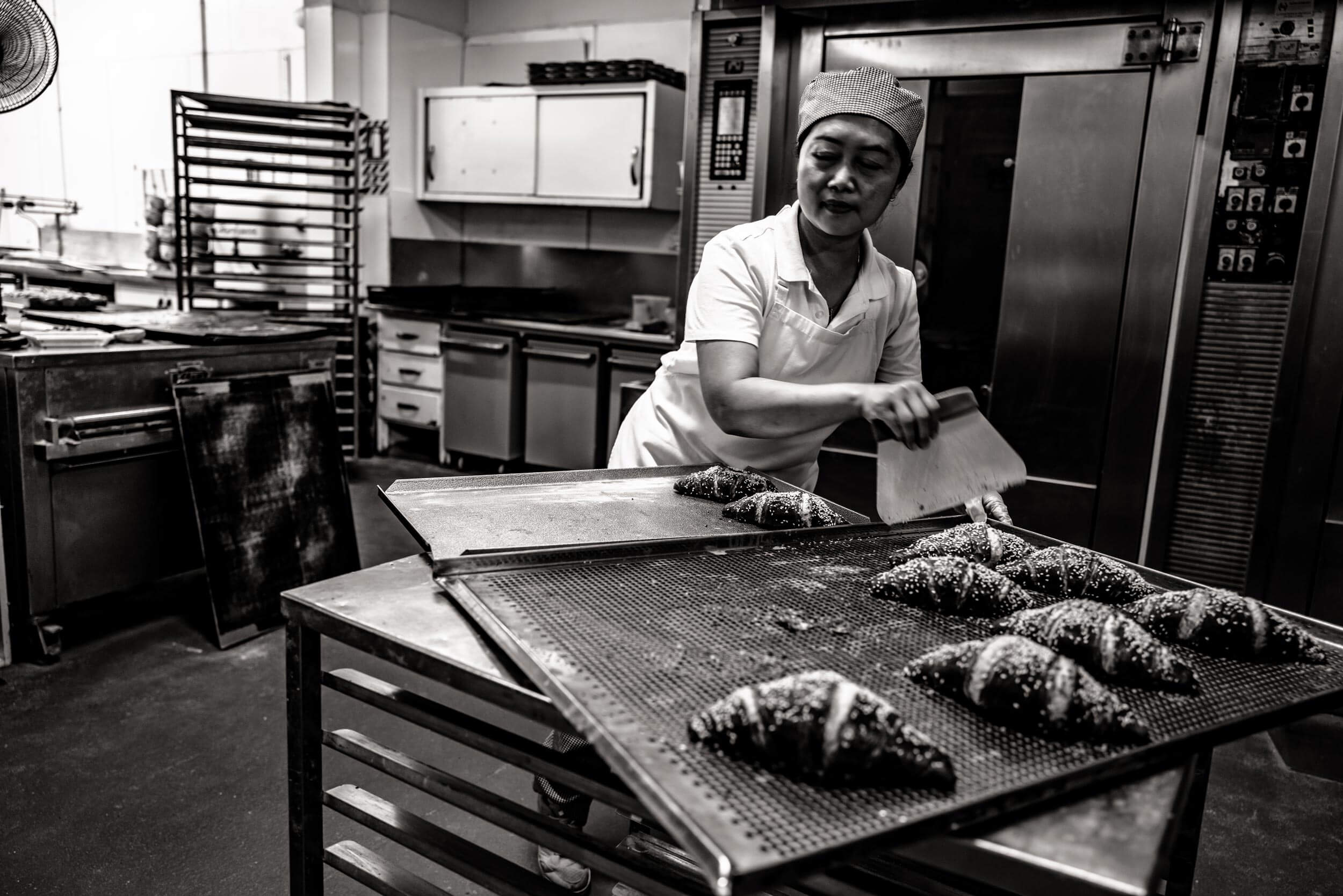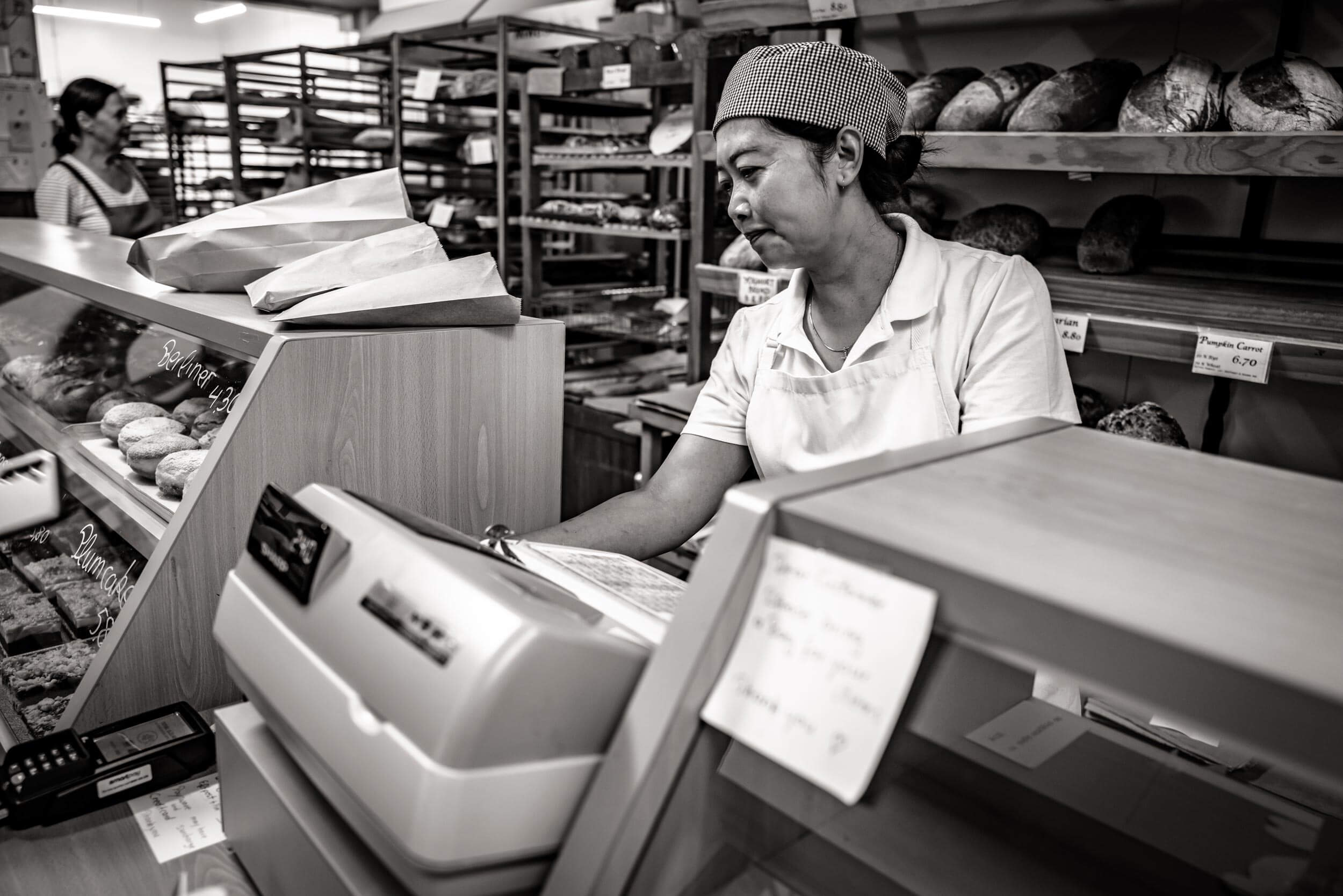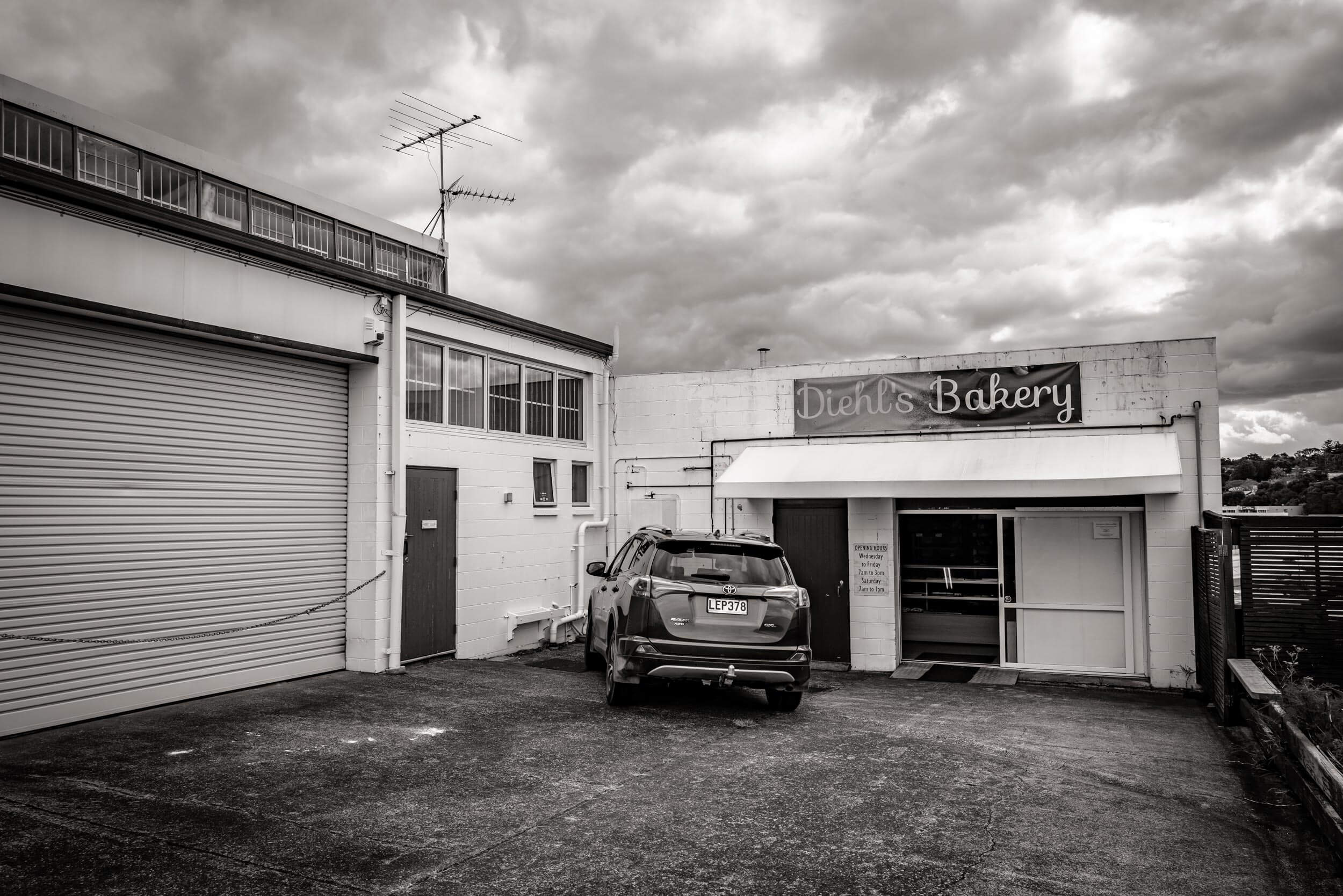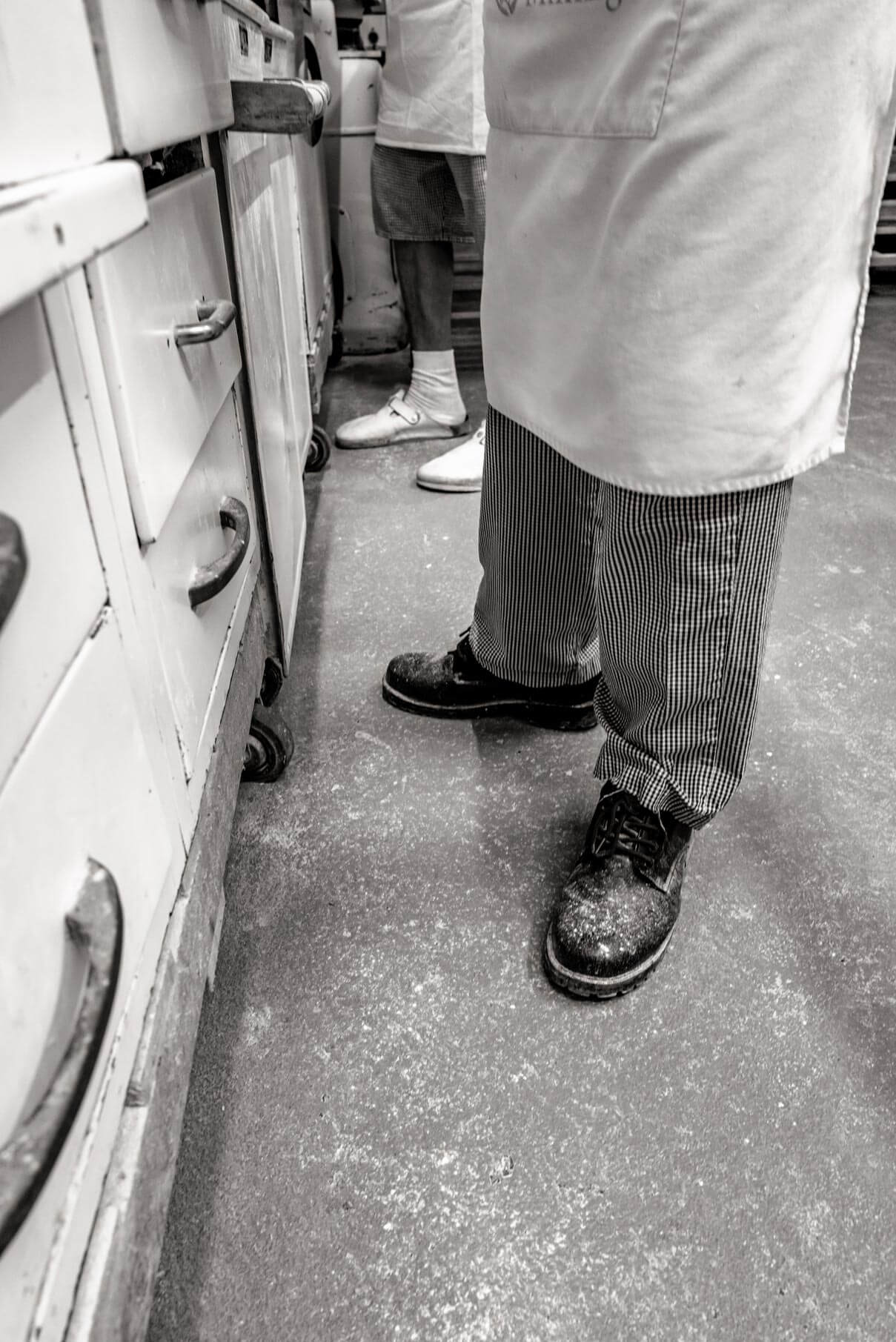In 1993, Ingo Diehl started a small bakery to produce high quality German style bread. He was joined in 2015 by Meinolf Kraeling—a German Baker with 40 years of baking experience. Meinolf and his wife, Ursula, now own and run the bakery. “Only four days a week,” says Meinolf. “I used to work seven days a week in Germany!”
The Fortuna Kneading machine is a German-made product. The company that produces the Fortuna Kneading machine is called Fortuna Maschinenbau GmbH, and it is based in the town of Reichshof in Germany. The company has been producing dough kneading machines since 1949 and has a reputation for high-quality and reliable equipment.
It features a large, rotating mixing bowl that can hold several kilograms of dough at once. The bowl is mounted on a stand and is driven by a powerful electric motor, which rotates the bowl at a high speed.
The mixing blades of the Fortuna kneading machine are designed to knead the dough thoroughly and efficiently, creating a consistent texture and quality throughout the dough. The blades can be adjusted to different settings, allowing bakers to control the speed and intensity of the kneading process depending on the type of dough being prepared.
The inventor of the kneading machine was Ernst Schwarz. He began producing dough kneading machines in his small workshop in Germany. Initially, the machines were simple and manually operated, but over time, Schwarz continued to refine and improve the design, eventually developing the first electrically operated kneading machine in 1964.
The giant countrybread made of rye, wheat, and mixed bread. And of course, the rye sourdough. It’s a huge saucer shaped bread that’s impressively big and currently retails at $33. The ovens they’re baked in, are a few decades old, imported from Germany. One oven is well over 30 years old and fully manual. The second oven which is about 20 years old allows for programming. Both are excellent work horses and work with clinical German efficiency.
“People think that bread making is all about heat and ovens,” says Meinolf. “However, in a small operation like ours, the freezer plays an important role. The temperature of the freezer is maintained at minus 16°C. However, it’s also expensive to maintain a freezer and “every minute that it’s open costs me one dollar. In a single minute or two, the temperature can go up by 12-14 degrees and has to cool down again”.
The Kommis comes in two shapes: rectangular and square. They’re exactly the same, except for the variation in the shape.
Kommissbrot, also known as Kommissbrot Roggenmischbrot, is a type of German bread that is traditionally associated with the city of Lübeck in northern Germany. The bread is a dark, dense rye bread and sourdough starter.
The name “Kommissbrot” is said to have originated during the Hanseatic period, when it was customary for ship’s crews to receive a ration of bread as part of their payment. The bread was often made by apprentices in the ship’s bakery, who were known as “Kommis.” Over time, the bread came to be known as “Kommissbrot” in honor of the apprentice bakers who made it.
Bakers sometimes use lye in their baking process to achieve a particular texture and flavor in certain types of bread. Lye is commonly used in the production of pretzels and bagels, where it is used in a process known as “boiling” or “scalding.”
During the boiling process, the shaped dough is briefly dipped into a solution of water and food-grade lye, which creates a chemical reaction that causes the surface of the dough to become alkaline. This alkaline surface helps to create a unique texture and flavor in the finished product. The lye treatment also helps to create a dark, glossy crust on the bread.
However, it is important to note that lye is a caustic substance that can be hazardous if not handled properly. Therefore, bakers who use lye in their baking process must take extra precautions to ensure that the lye is properly diluted and handled with the necessary safety equipment and procedures. Additionally, the use of food-grade lye is recommended in baking applications to ensure that the lye is free from impurities that could be harmful if ingested.
German black bread, also known as Schwarzbrot, is a type of bread that is widely consumed in Germany and other parts of Europe. It is a dense, hearty bread and at Diehl’s it’s made with 100% rye. The bread has a dark color and a strong, earthy flavor that is distinctive and often described as nutty or slightly sour.
The traditional method of making German black bread involves a long fermentation process, which can take several days. The dough is typically mixed with a sourdough starter, which helps to develop the bread’s unique flavor and texture. The bread is then baked at a high temperature for a long period of time, which helps to develop a thick, dark crust. One of the “secrets” of making the bread is to add about “three week old” black bread into the dough, which gives the fresh bread its flavours.
It’s considered to be a healthy bread option, as it is high in fibre and other nutrients. At the bakery, the bread is almost always sold in a pack of about ½” slices, as they’re almost impossible to cut at home without it falling apart.
Susan, getting the laugen croissants ready for sale on a Saturday morning. Saturday is one of the busiest days of the week. A laugen solution is often used in the production of pretzels and other baked goods in Germany. The process of dipping the dough in this solution before baking gives these baked goods a characteristic brown and shiny crust, as well as a unique flavor and texture. Laugen croissants are not likely to be found easily, if at all. At Diehl’s there’s always some new type of bread being offered that is unique to the bakery.

